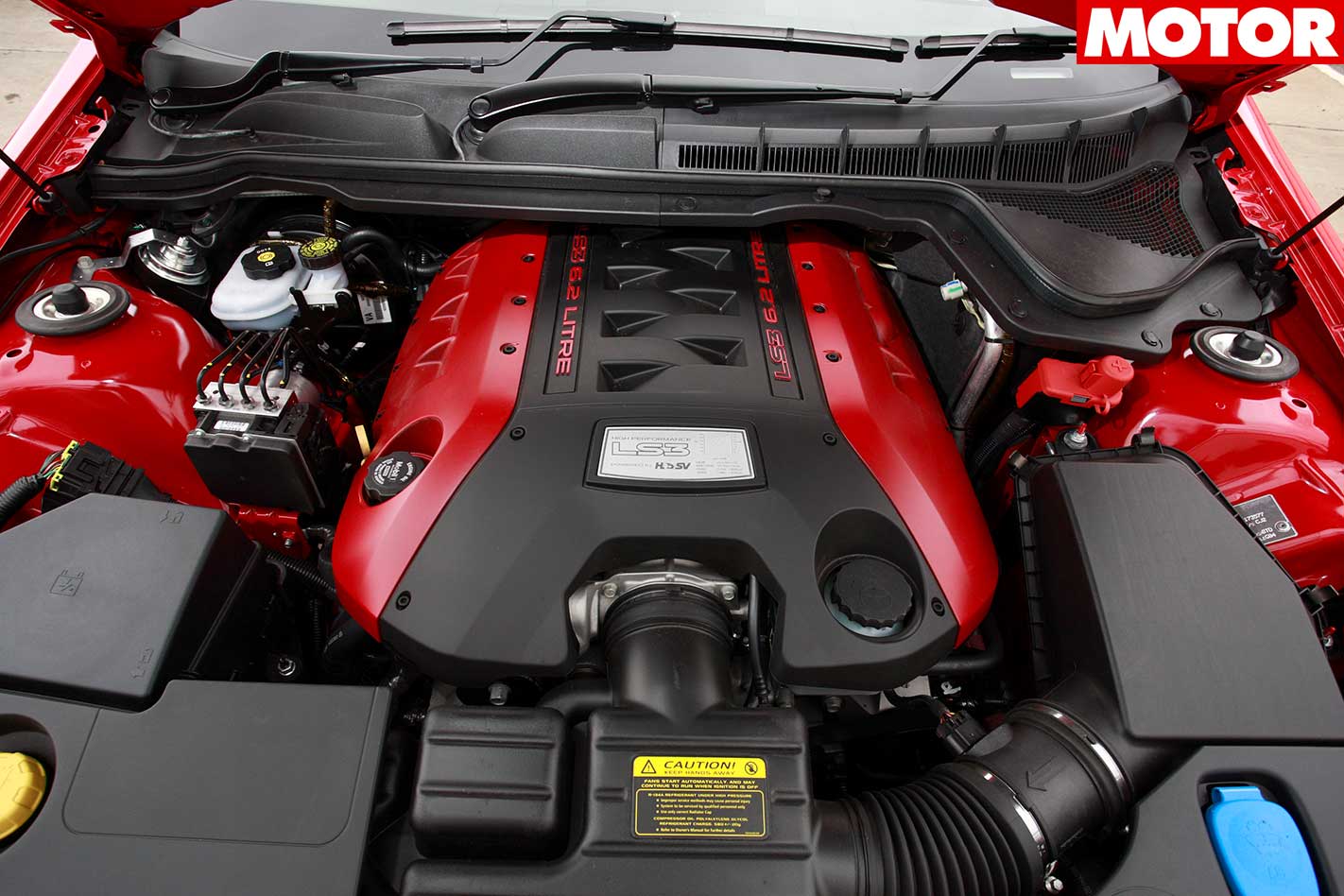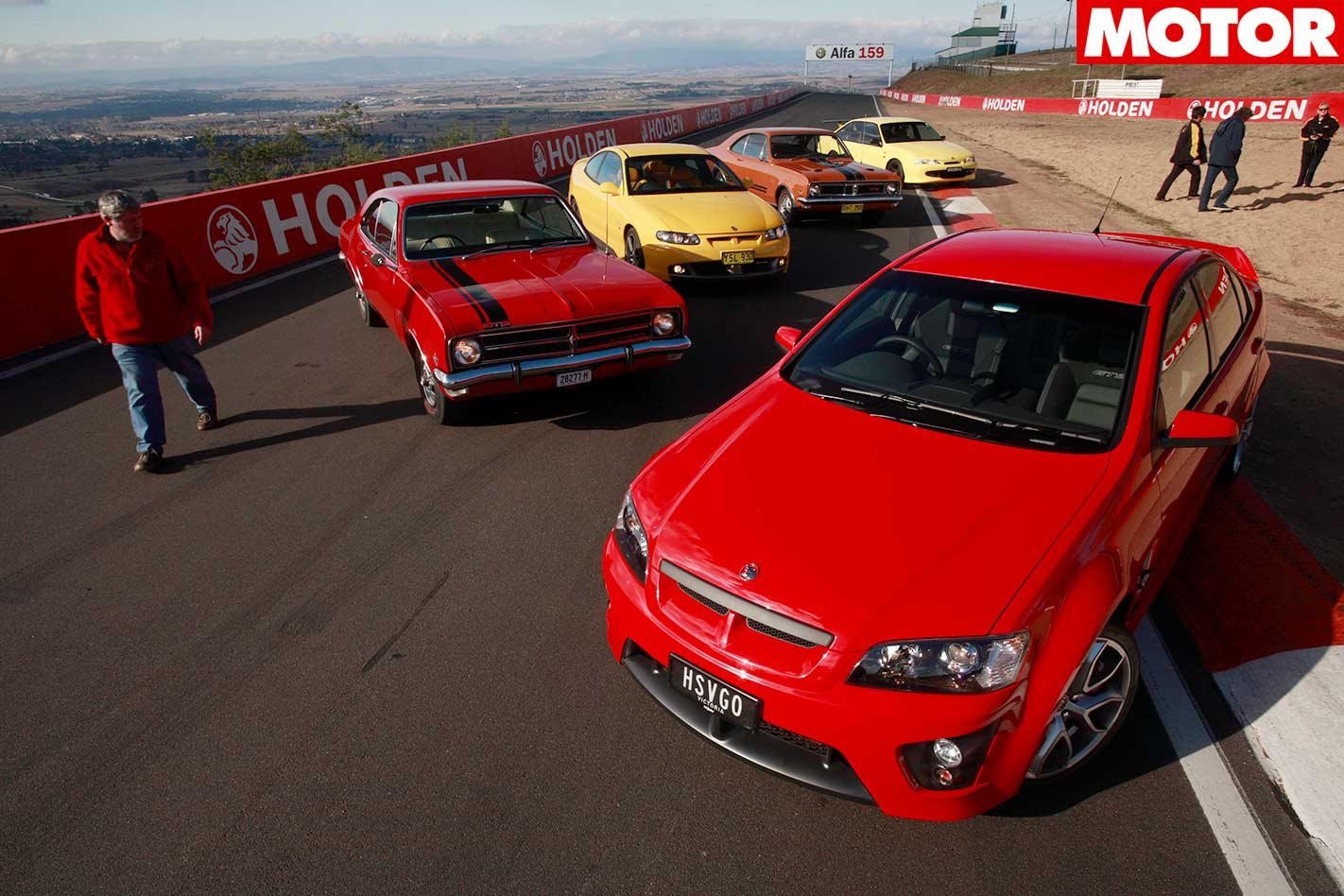Our Damion has a plan. It seems that this month is the 40th anniversary of the GTS name in Australia and, unable to contain himself until the 50th, MOTOR’s eager Production Editor has rustled up a pile of Holdens bearing that sacred badge.
This feature was first published in MOTOR Magazine’s August 2008 issue
The Plan is to give their owners a taste of the Mount Panorama circuit that coated the name in glory… and me the experience of 40 years of evolution in one day. Commencing at dawn on Sunday, it is a good plan. But not perfect…
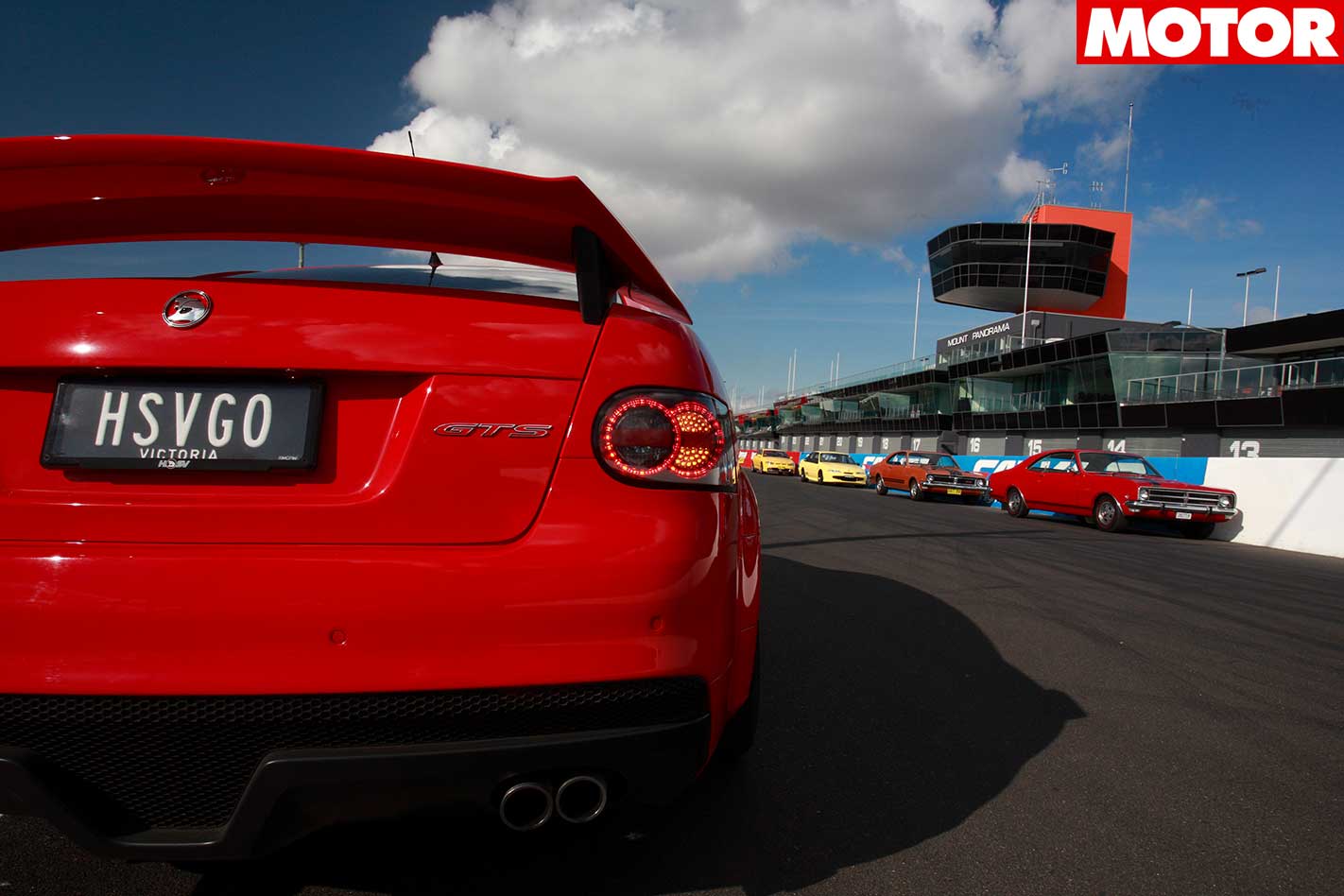
Granted, this is faint praise as the brute still has the stance of a phone box and the visibility of a bunker, but let’s cut it some sporting slack: because in that context it has merit, as 317kW usually does. But it’s the delivery of 550Nm of torque and the Magnetic Ride Control-equipped chassis that, numbers be buggered, impress on our journey. A journey back in time, and not only because we meet out in semi-rural Richmond.
Assembled there are an SBS diversity of souls linked by both a love of Australia’s uniquely bastard-born but circuit-sanctified cars and a staggering knowledge of their minutiae. Did you know that an original 350-engined HT Monaro’s prop-shaft was painted purple? I couldn’t have even made that up! What these folk don’t know, I am assured, isn’t worth knowing.
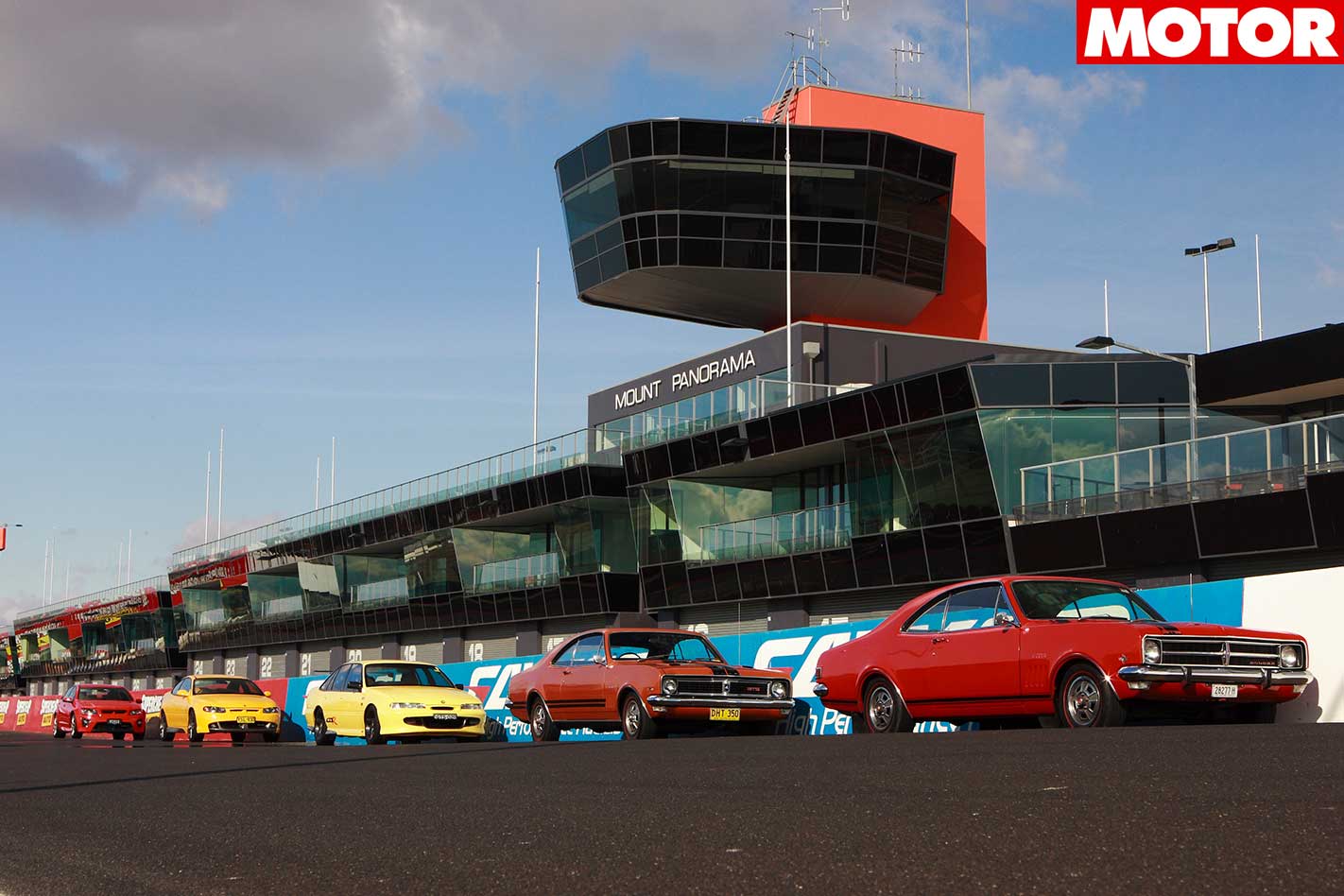
Pull on the seatbelt and it doesn’t budge. Adjust. And adjust to seats as slippery as a dancefloor that top out at mid shoulder-blade and address a thin-rimmed, hard-gloss, yard-wide wheel. How anybody raced that workstation (and the rules required they did) almost defies comprehension.
The red brute is no less demanding on the road: a car of almost religious purity, it offered few comforts. Neither air-conditioning nor automatic transmissions were offered and the high and hard-as-a-dog’s-forehead dashboard bristles with menace.
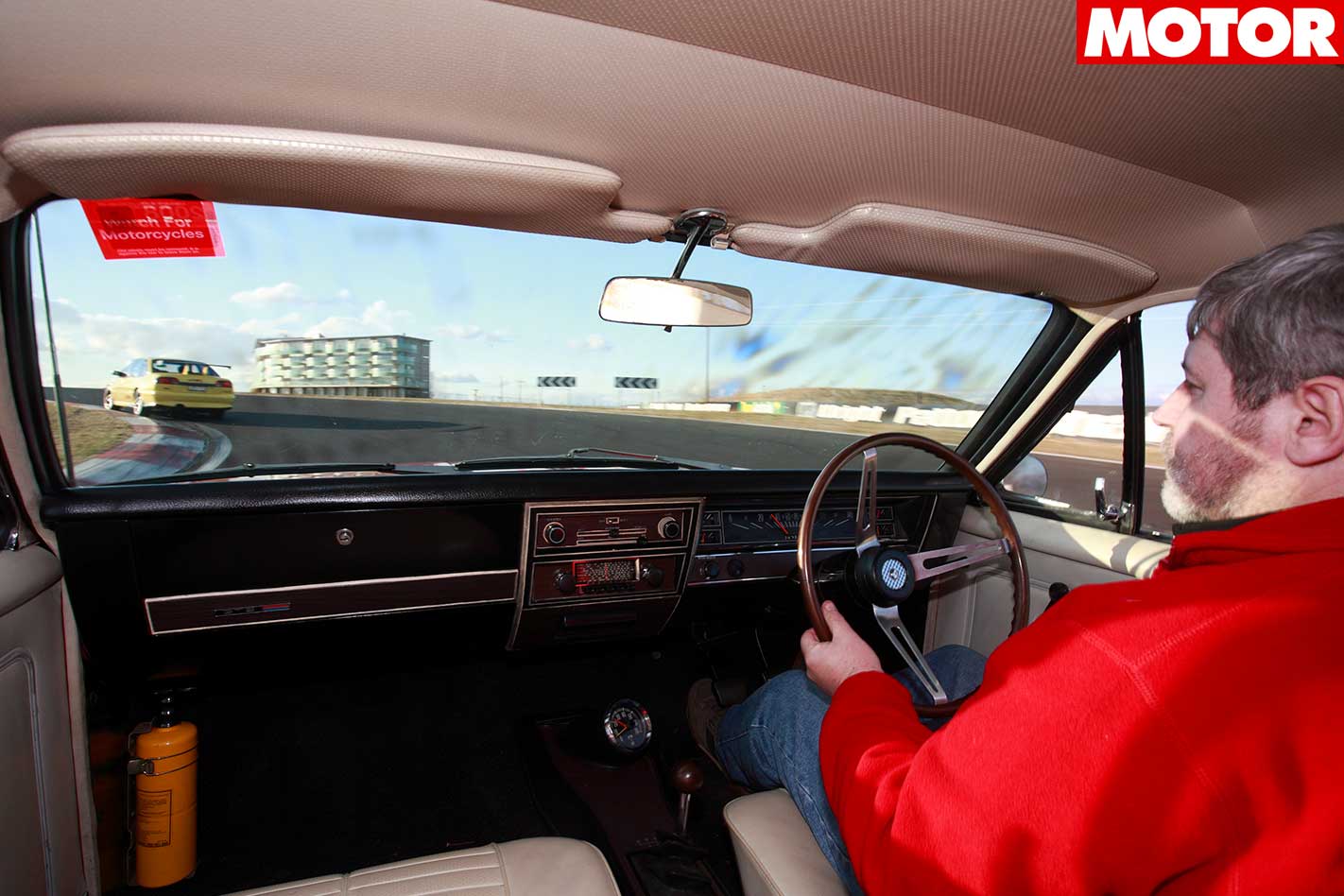
Cars that once changed hands for $4000 are now worth $140,000 + and the best part is you can still use them. John Bertuzzi’s 92,000 mile HT GTS 350 Monaro underlines the point; not that it doesn’t take some effort if you’re keen. And he is.
Probably the most original car on the guest list, it’s Factory Authentic down to its nuts, bolts and period radiator clamps. Even the battery is original – or its casing is at least – and contemporary tyres are professionally red-walled to look period perfect. But Factory Authentic doesn’t mean cotton-woolled concours and John’s entirely happy to use the westward roads to demonstrate what God gave us the 350 engine for.
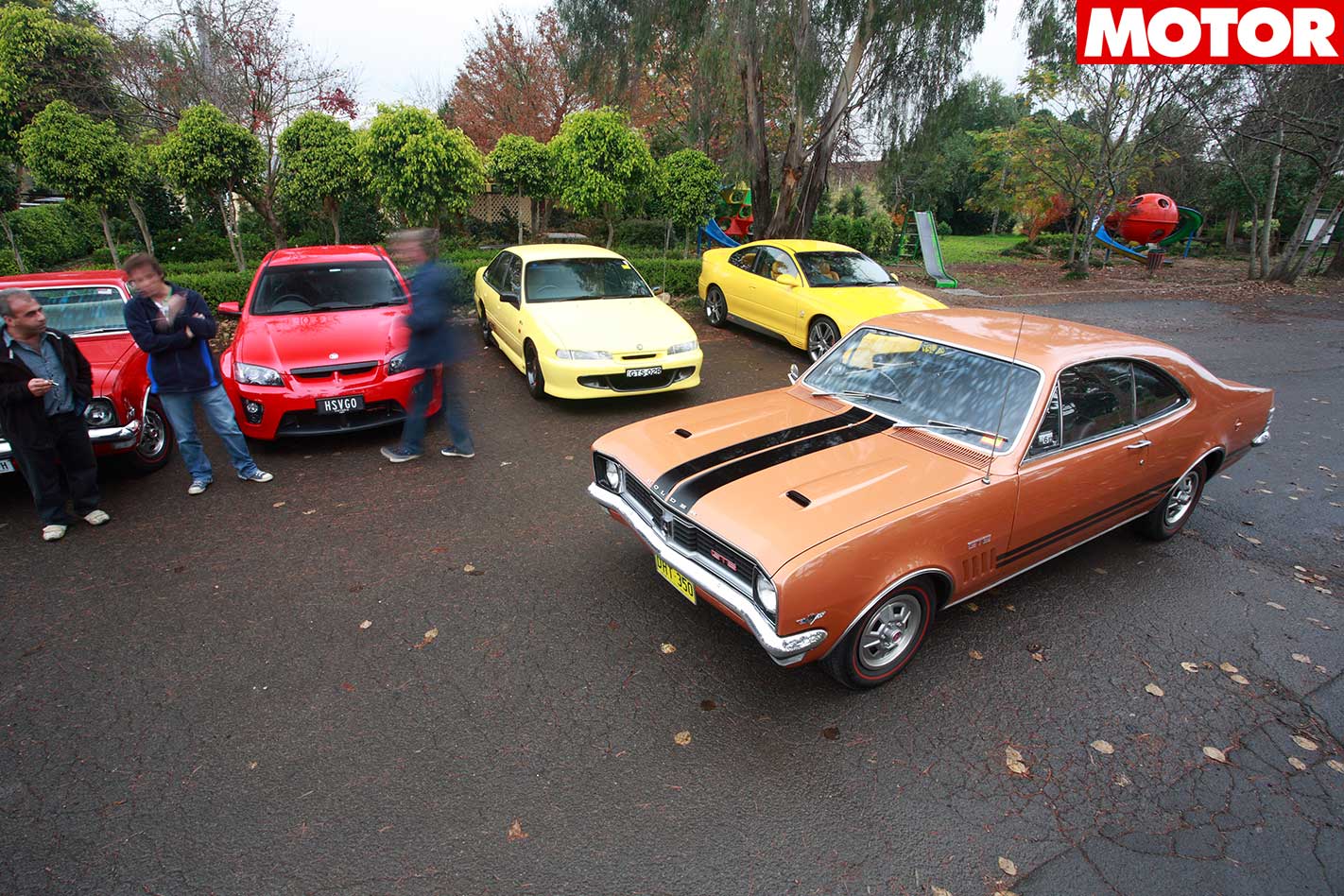
That advance over the HK’s 327 reflects, along with subtle interior and exterior refinements, a solid year’s work back at the factory; work rewarded by the second, and last, Bathurst victory for the GTS badge.
The improvements show on the road, too, with a deeper, more primal sound, improved seating and more sensible instrumentation, but I suspect that all the love lies on the other side of the firewall for John: big V8s go back to his childhood and even today, his (and his wife’s) five cars have nothing less than five litres apiece.
Okay, some of the car’s old bones creak on the Bells Line of Road, but the heart is still there and when, years ahead, the last V8 is heard in the distance, I have a fair idea who’ll be driving it.
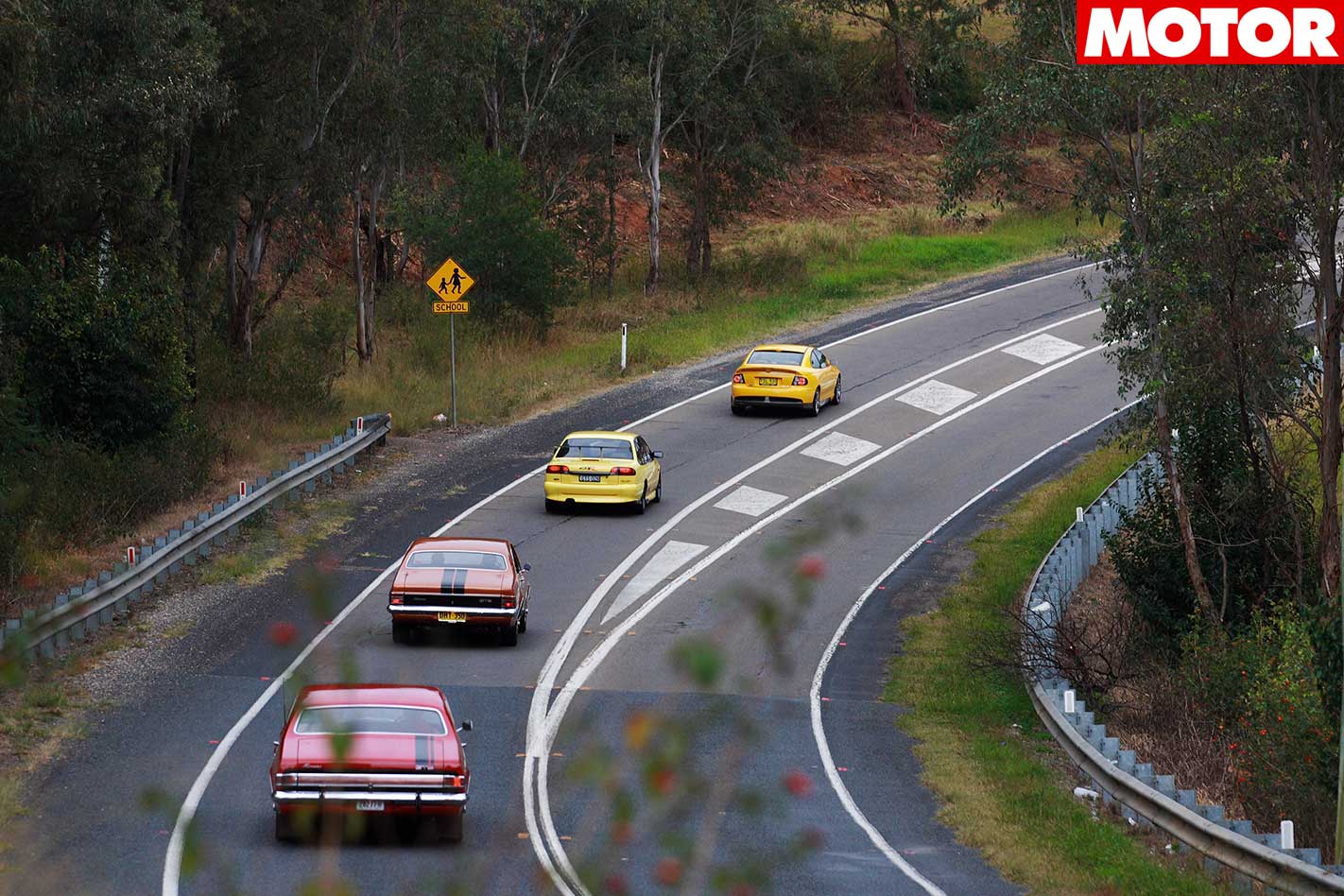
As Peter Hennessy’s HRT-optimised 1996 HSV GTS-R proves. The rarest and wildest Holden ever to wear the GTS badge, the four-door R is a standout even in this company.
I still remember driving one at its launch and shrinking into the seat at every traffic light. This from an E-Type owner. But the thing was, and still is, outrageous, with its massive rear wing and carbonfibre detailing and bright ‘XU3 Yellah’ paint (the standard taxi colour in Melbourne) all adding to the clamour.
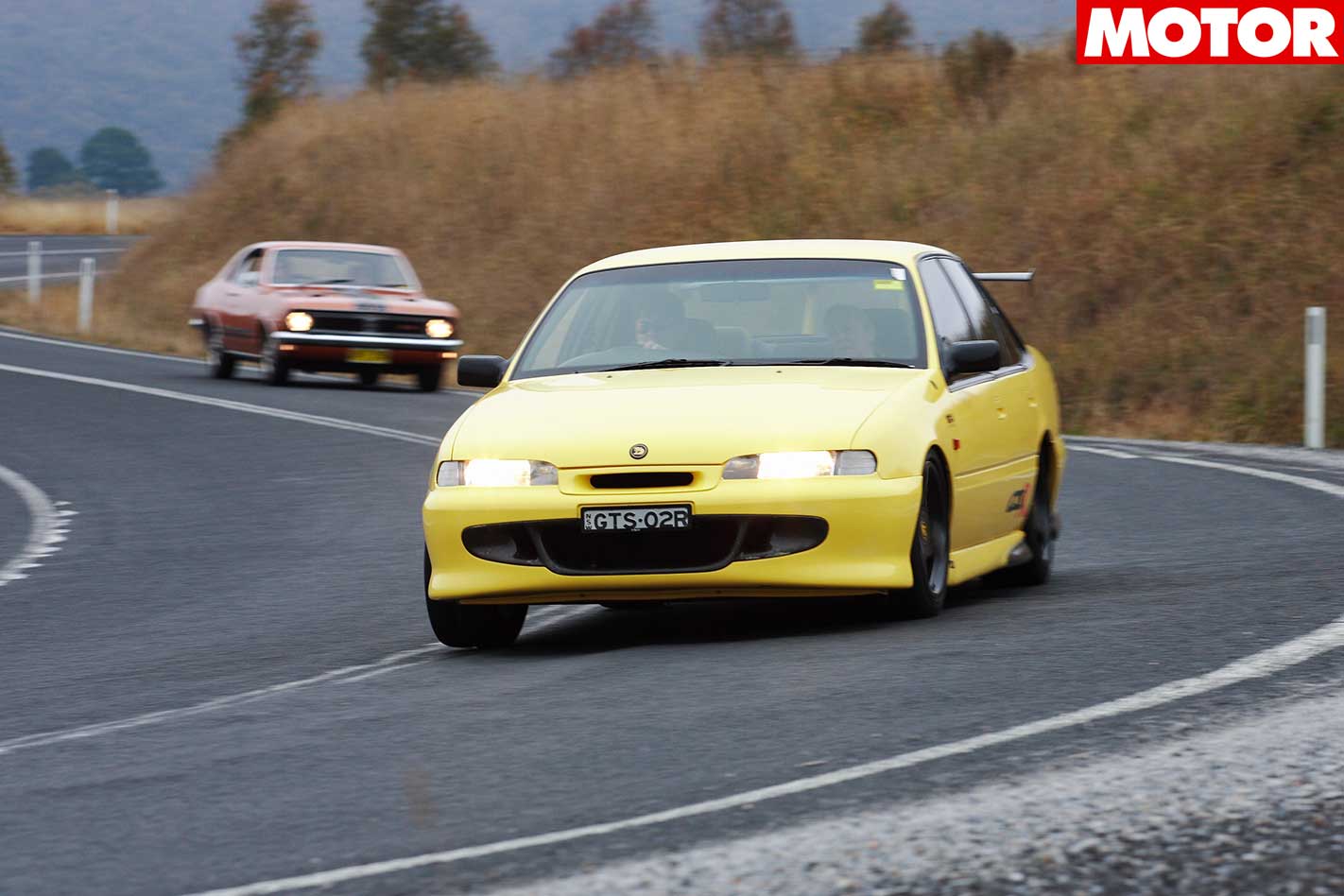
Underneath, racing experience in his BMW E36 M3R has inspired Peter to equip the GTS-R with modified springs and dampers and cross-drilled, slotted brake rotors. So the thing goes real-world harder than it ever did and the wing does whatever it does without disturbing the vision. And from the inside, you don’t even have to look at it, Praise Be.

As treasurer of the HSV Owners Club and president of the Australian Muscle Car Club, it may be assumed that our Mr Losurdo knows a good deal about such brutes but that is strictly incorrect. He knows everything, and even in this company, has godfather status.
So his arrival today in a 2003 HSV GTS Coupe is a commendation of the return of the GTS badge to its original form, as a two-door with the 5.7-litre LS1 engine that matches the HT’s 350-cube armament and Chevrolet parentage. And then some.
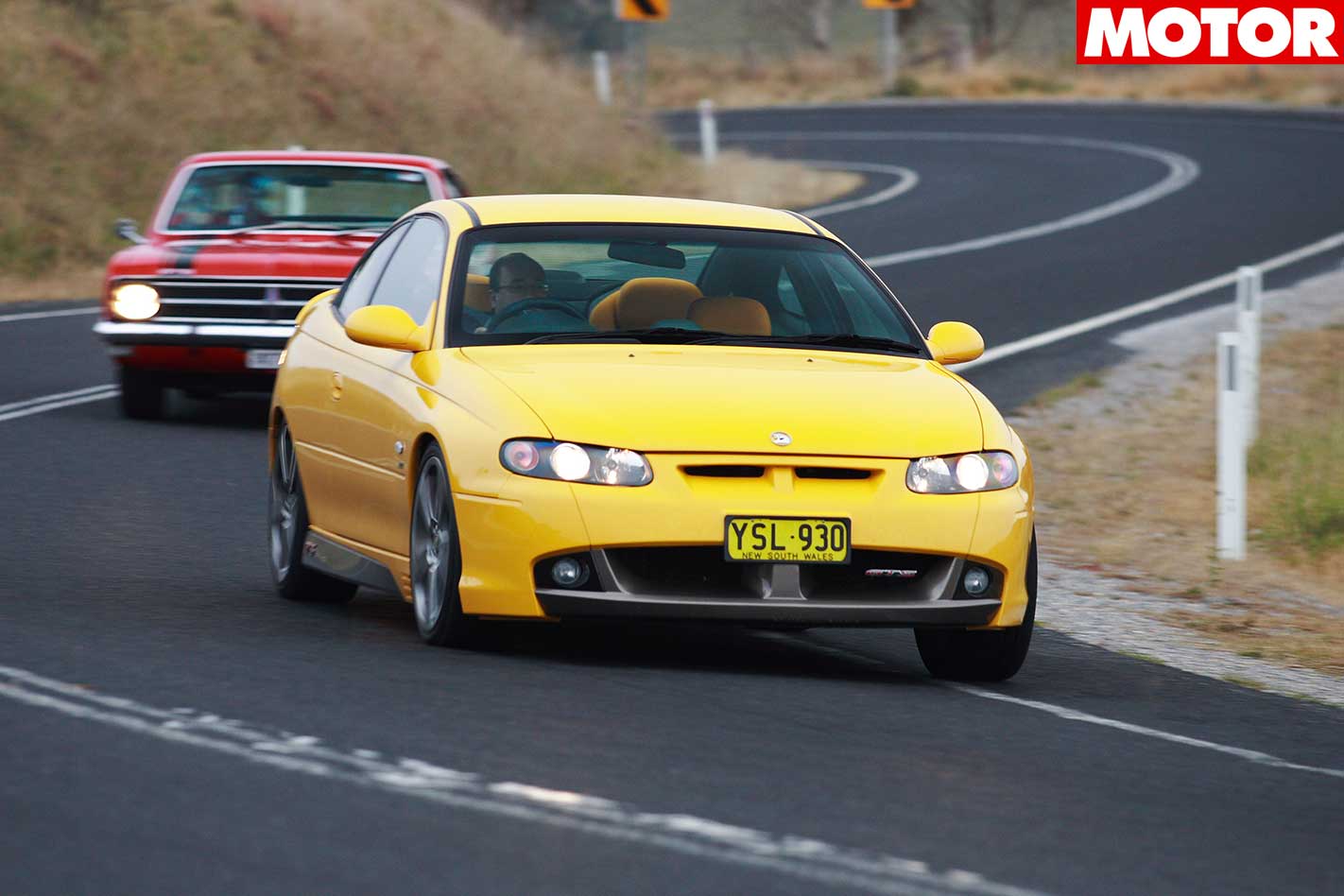
Remaining indoors is wiser, though, because the coupe is the first of this lot that actually feels truly cohesive…solid. As it should, with a new-car price of $105,000 making it the most expensive to ever wear the GTS badge. It rides firmly, but not uncomfortably, due in part to good seating intelligently employing leather and fabric where they should be for both physical effect and aesthetic benefit.
The exterior aesthetics, though, are somewhat more controversial. Based on Mike Simcoe’s lovely 1998 Sydney Motor Show-stopping VT Coupe form, it has received yet another (after the Pontiac aberration) nose job to Add Manliness.
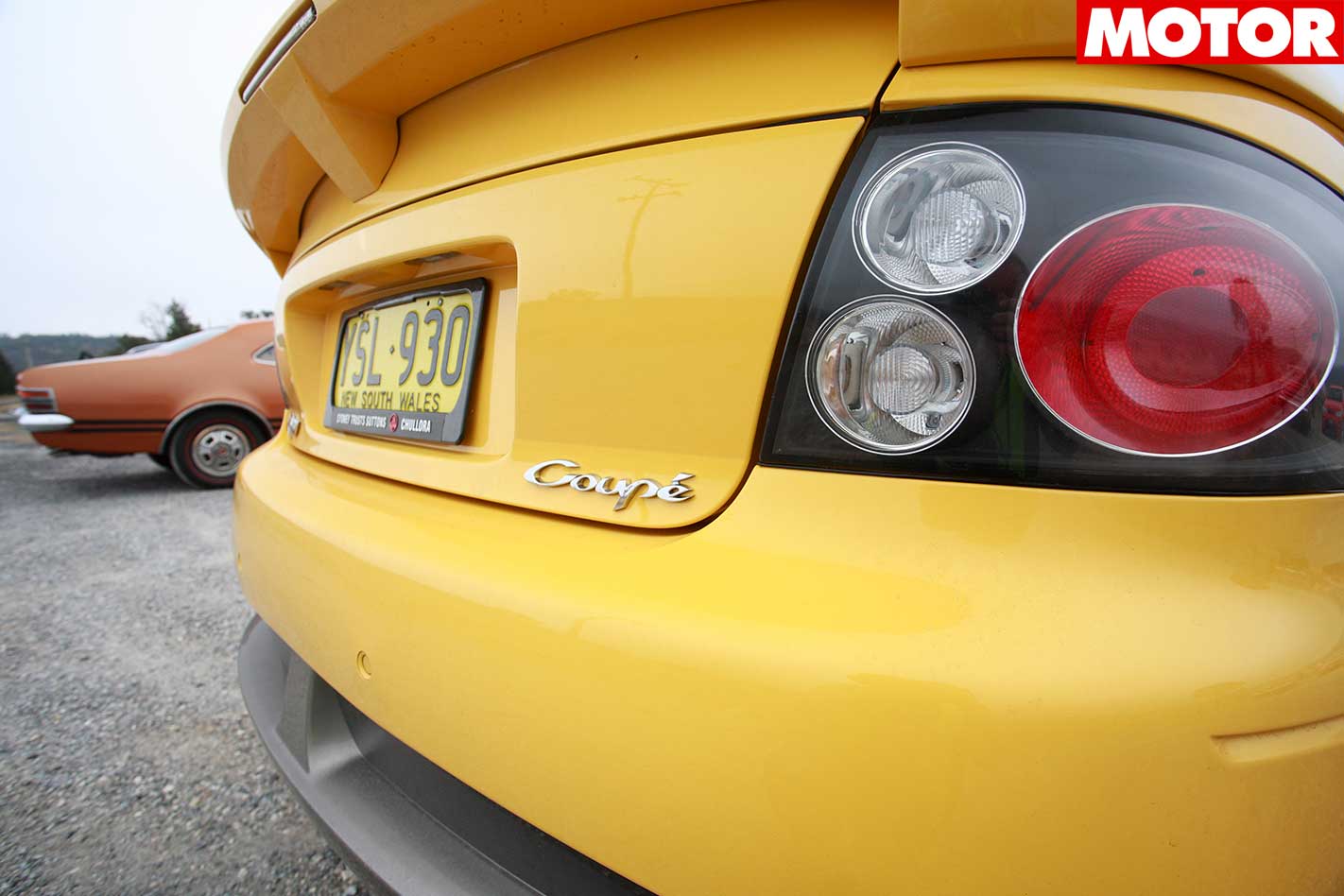
And there, in the GTS heartland, the stories begin again, facts and fallacies debated, and the comparisons and rivalries bubble up in good humour as the later cars are dubbed ‘plastics’ by the earlier model-owners, whose claims that their relics can’t be killed with a stick simply inspire a quest for a bigger stick.
And on it goes into the afternoon, disturbed only by Photographer Bean’s command for yet another angle or antic or briefly interrupted by the odd truancy around the circuit until, in fading light, our Mr Losurdo announces his departure to attend a Monaro Club meeting which causes me, if no-one else, to cry out into the coming night: “What’s left to say?!”
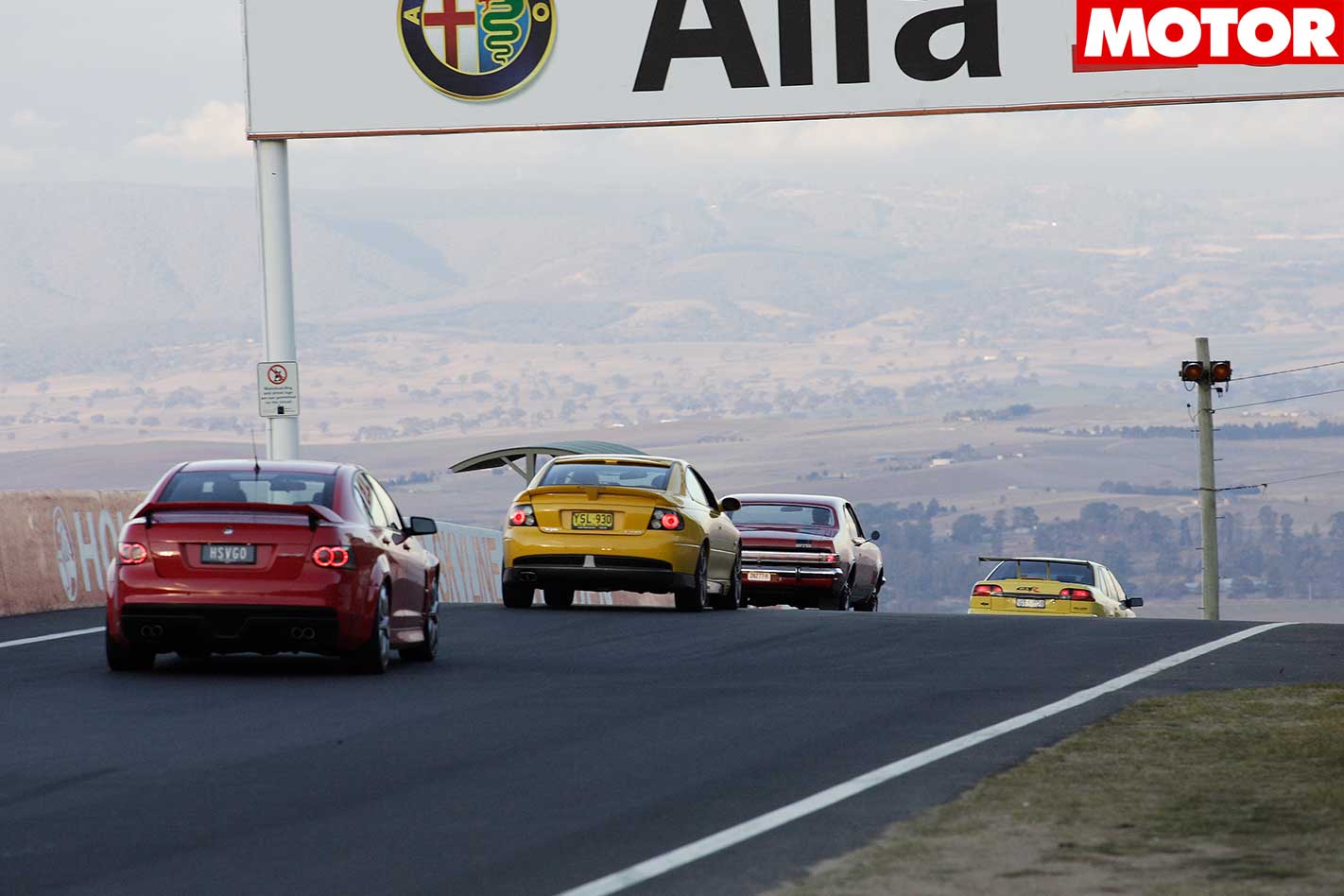
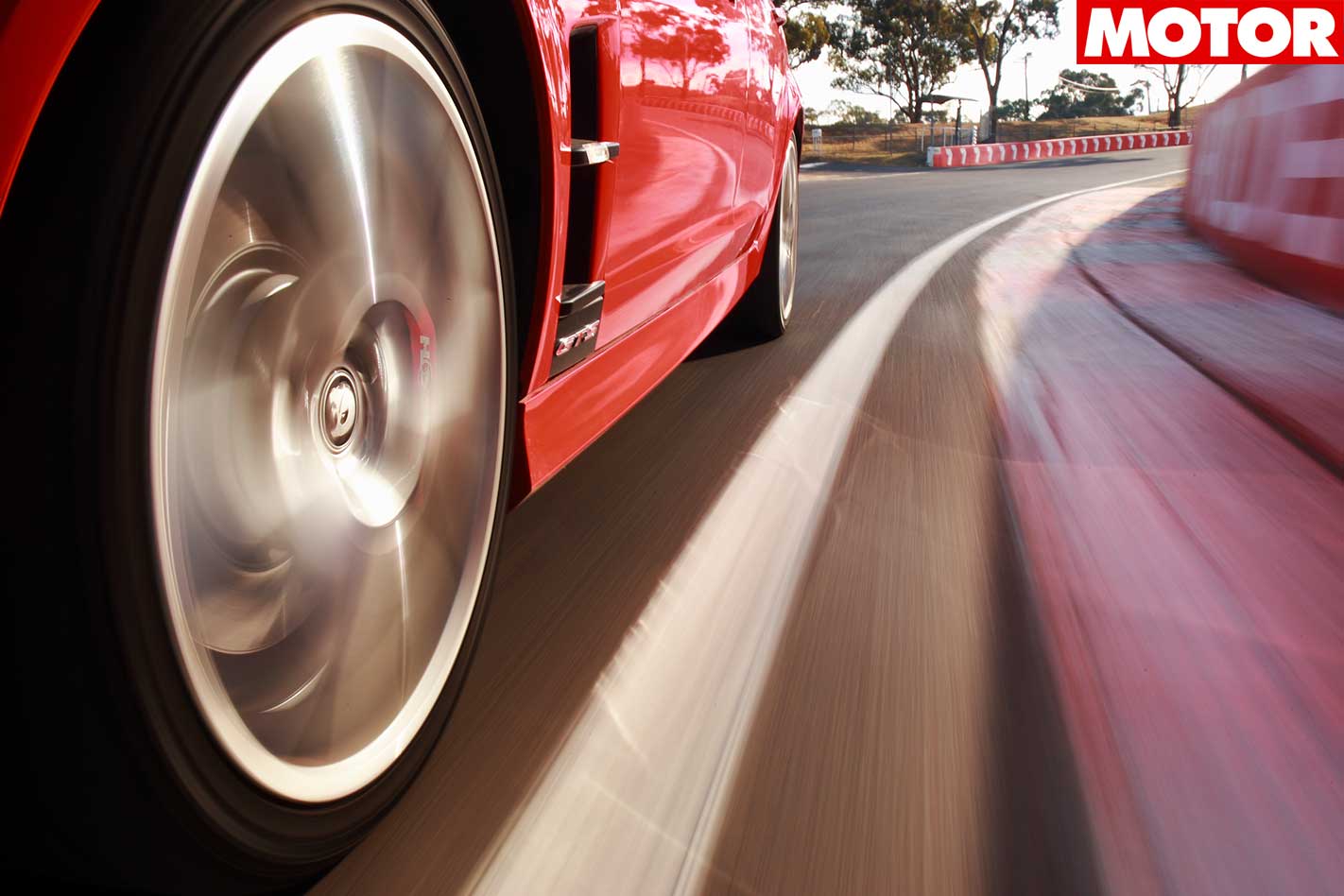
That lovely, lazy rumble on the way home from Bathurst is as pure a music as any machine ever made and as I listen, I can imagine the pleasure of owning a GTS. The only choice would be which. Because at the end of the day, if I had to drive one, it would be the last of them.
But to look at, it would be the first.
A big thank you to Rob Losurdo, John Bertuzzi, Steve Short and Peter Hennessey for giving us their time and knowledge.
1968 – 2008 GTS Timeline
1968 HK GTS
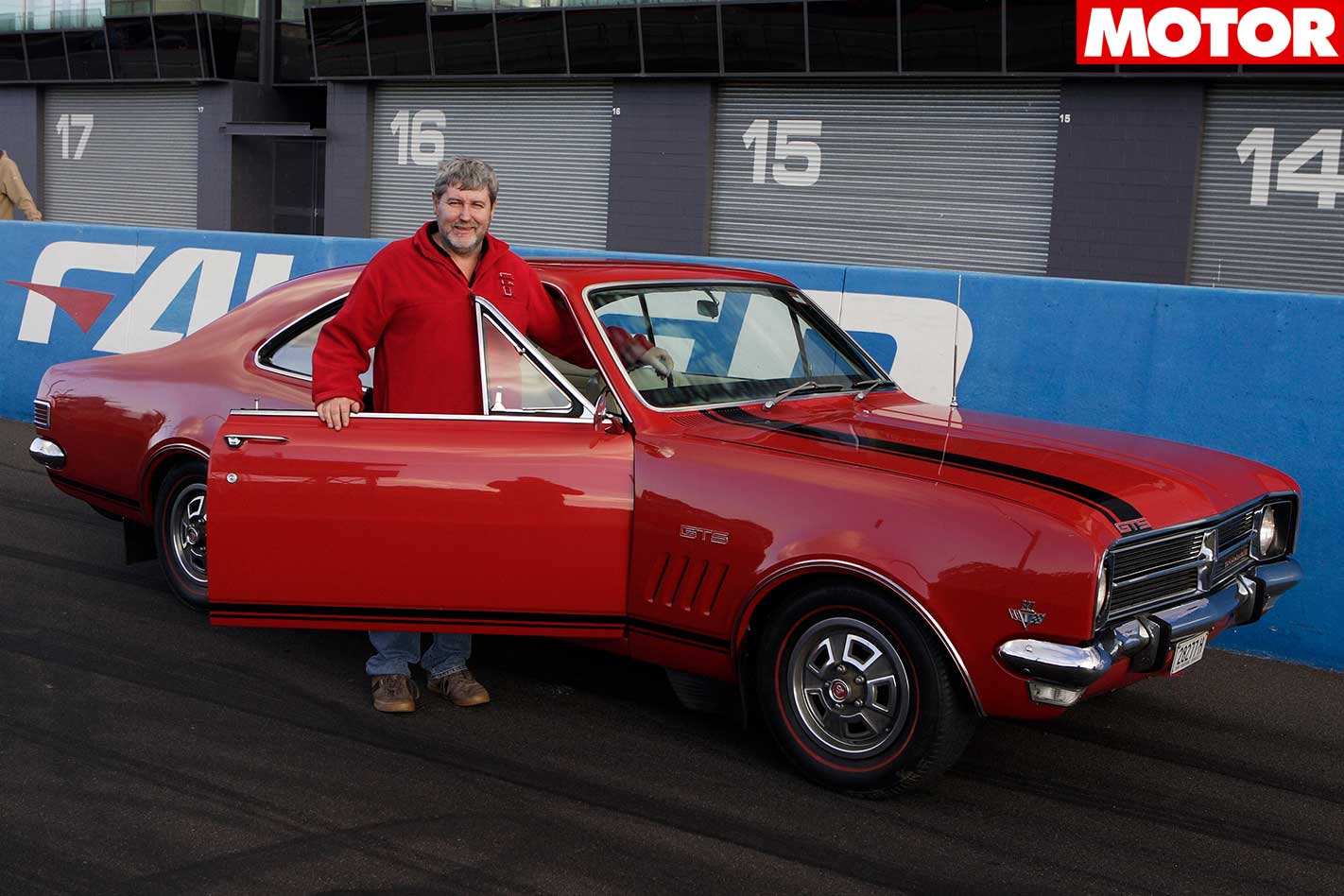
ENGINE: 5363cc V8, OHV, 16v POWER: 186kW @ 4800rpm TORQUE: 439Nm @ 3200rpm WEIGHT: 1488kg 0-97km/h: 7.6sec (man – tested) 0-400m: 16.4sec (man – tested) PRICE: $3790 (1968)
1969 HT GTS
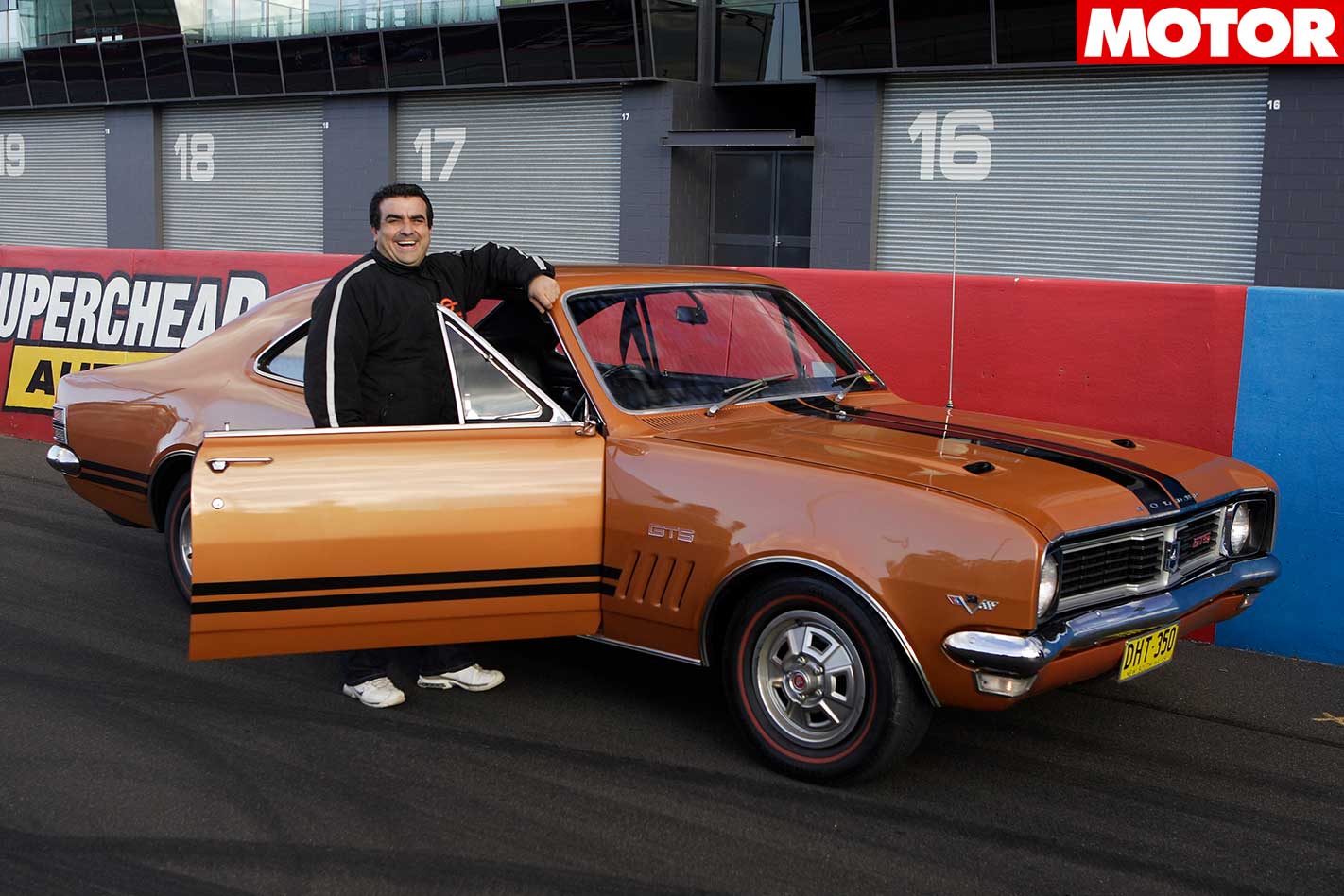
ENGINE: 5734cc V8, OHV, 16v POWER: 224kW @ 4800rpm TORQUE: 515Nm @ 3200rpm WEIGHT: 1504kg 0-97km/h: 8.1sec (man – tested) 0-400m: 15.6sec (man – tested) PRICE: $3995 (1969)
1970 HG GTS
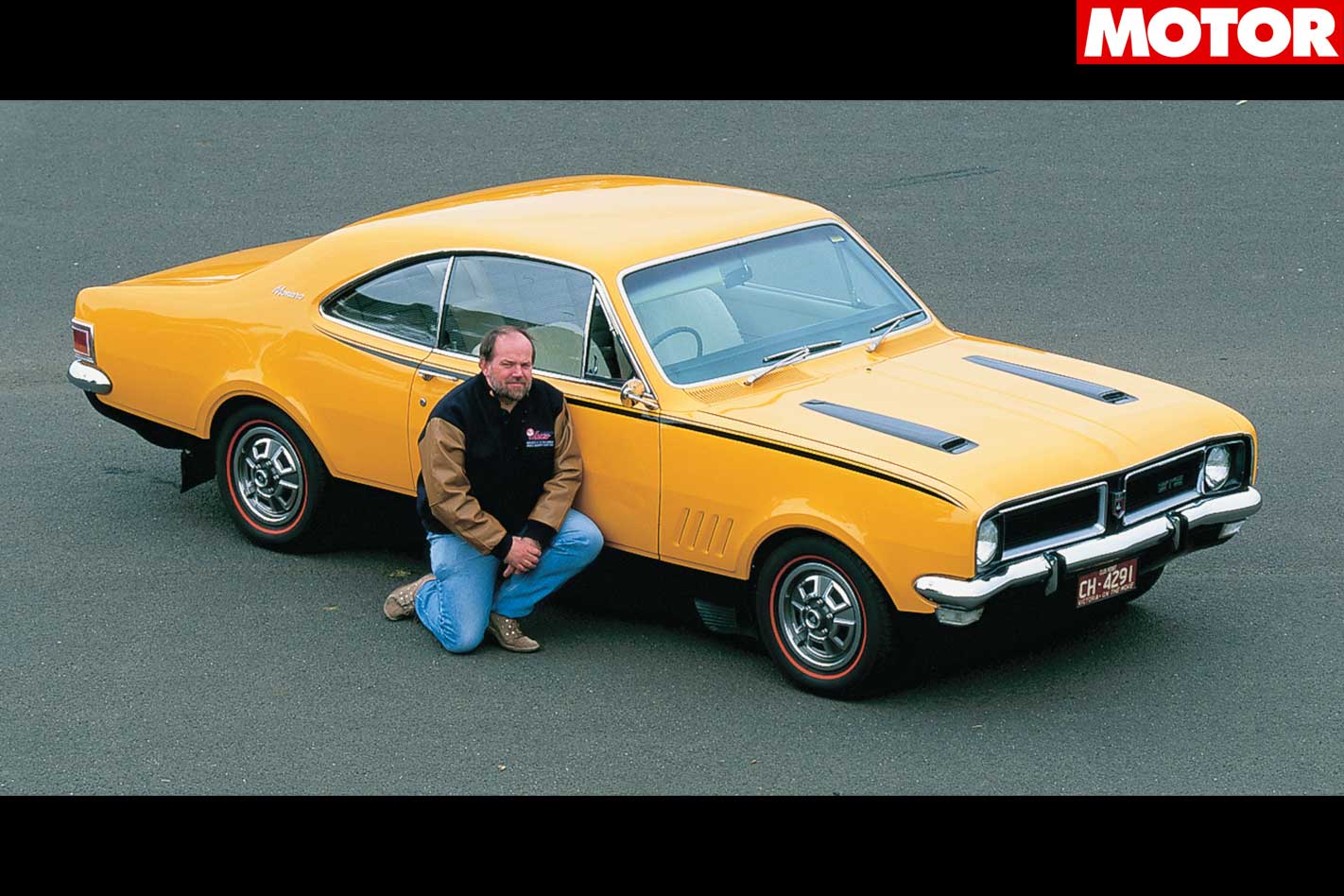
ENGINE: 5734cc V8, OHV, 16v POWER: 224kW @ 4800rpm TORQUE: 515Nm @ 3200rpm WEIGHT: 1530kg 0-97km/h: 7.5sec (man – tested) 0-400m: 16.0sec (man – tested) PRICE: $4174 (1970)
1971 HQ GTS
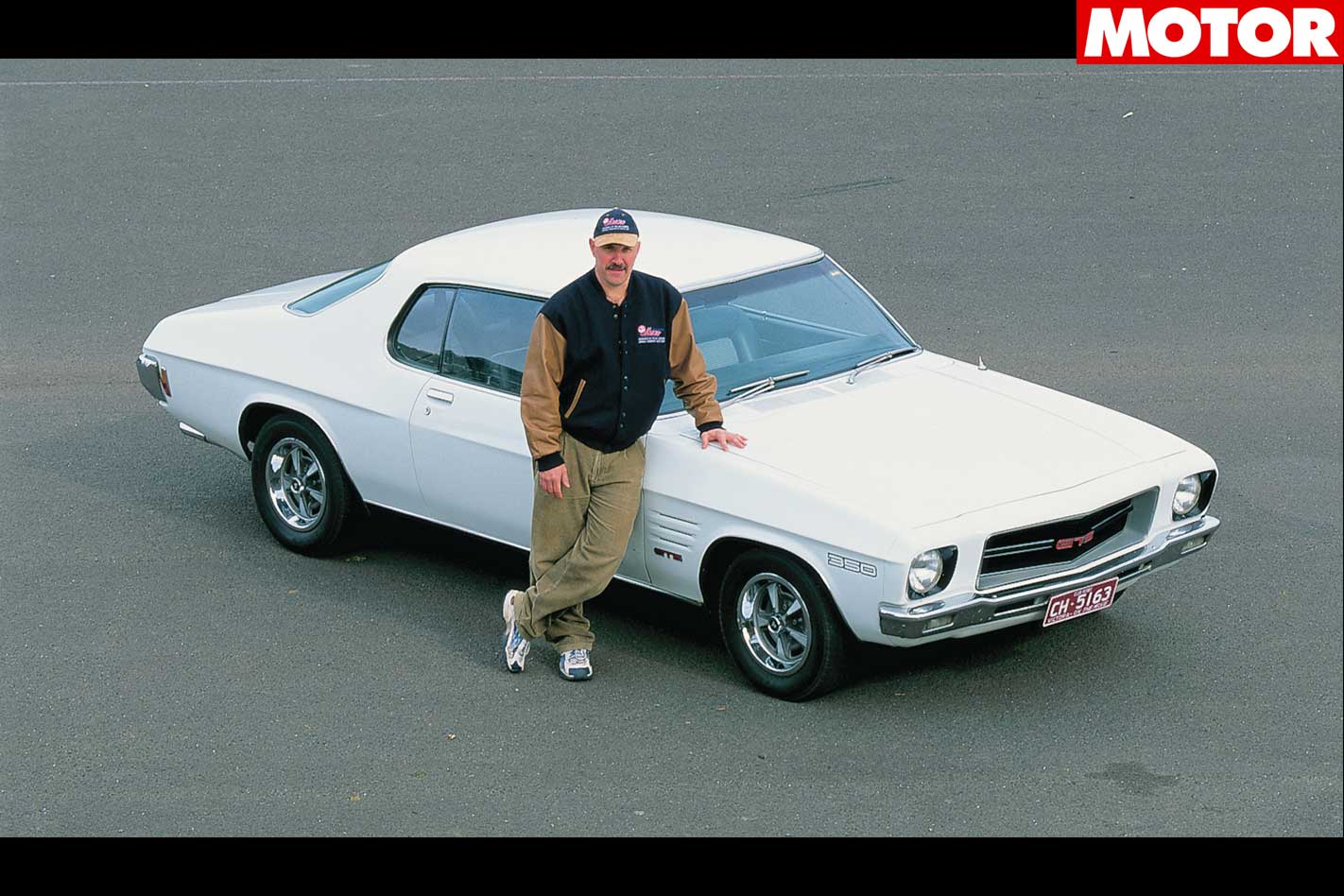
ENGINE: 5734cc V8, OHV, 16v POWER: 205kW @ 4800rpm TORQUE: 488Nm @ 3200rpm WEIGHT: 1451kg 0-97km/h: 8.0sec (man – tested) 0-400m: 15.7sec (man – tested) PRICE: $4630 (1971)
1974 HJ GTS
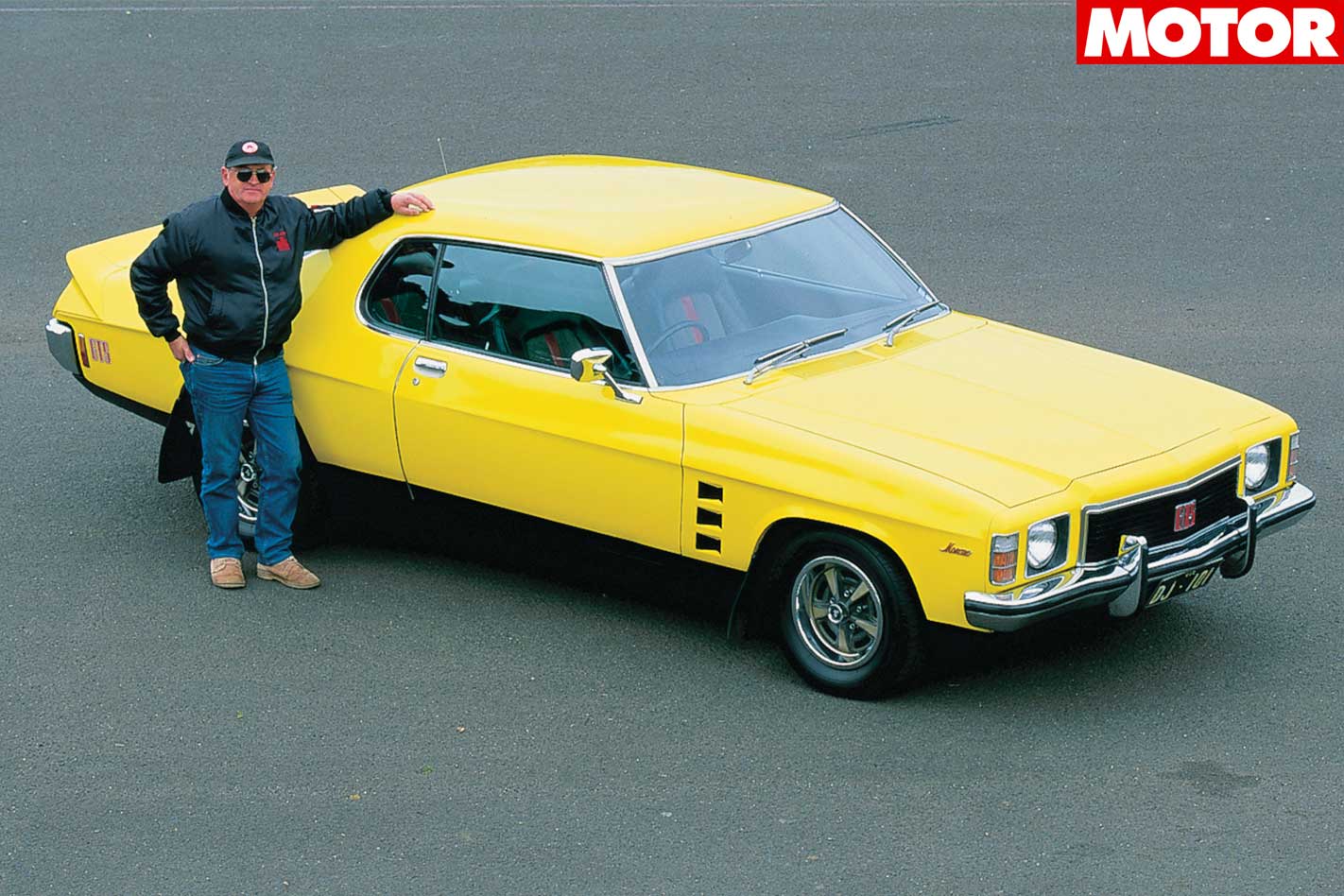
ENGINE: 5044cc V8, OHV, 16v POWER: 179kW @ 4800rpm TORQUE: 427Nm @ 3000rpm WEIGHT: 1438kg 0-100km/h: 10.4sec (auto – tested) 0-400m: 17.9sec (auto – tested) PRICE: $5138 (1974)
1976 HX GTS

ENGINE: 5044cc V8, OHV, 16v POWER: 161kW @ 4800rpm TORQUE: 400Nm @ 3100rpm WEIGHT: 1475kg 0-100km/h: not available 0-400m: 17.2sec (auto – tested) PRICE: $7016 (1976)
1977 HZ GTS
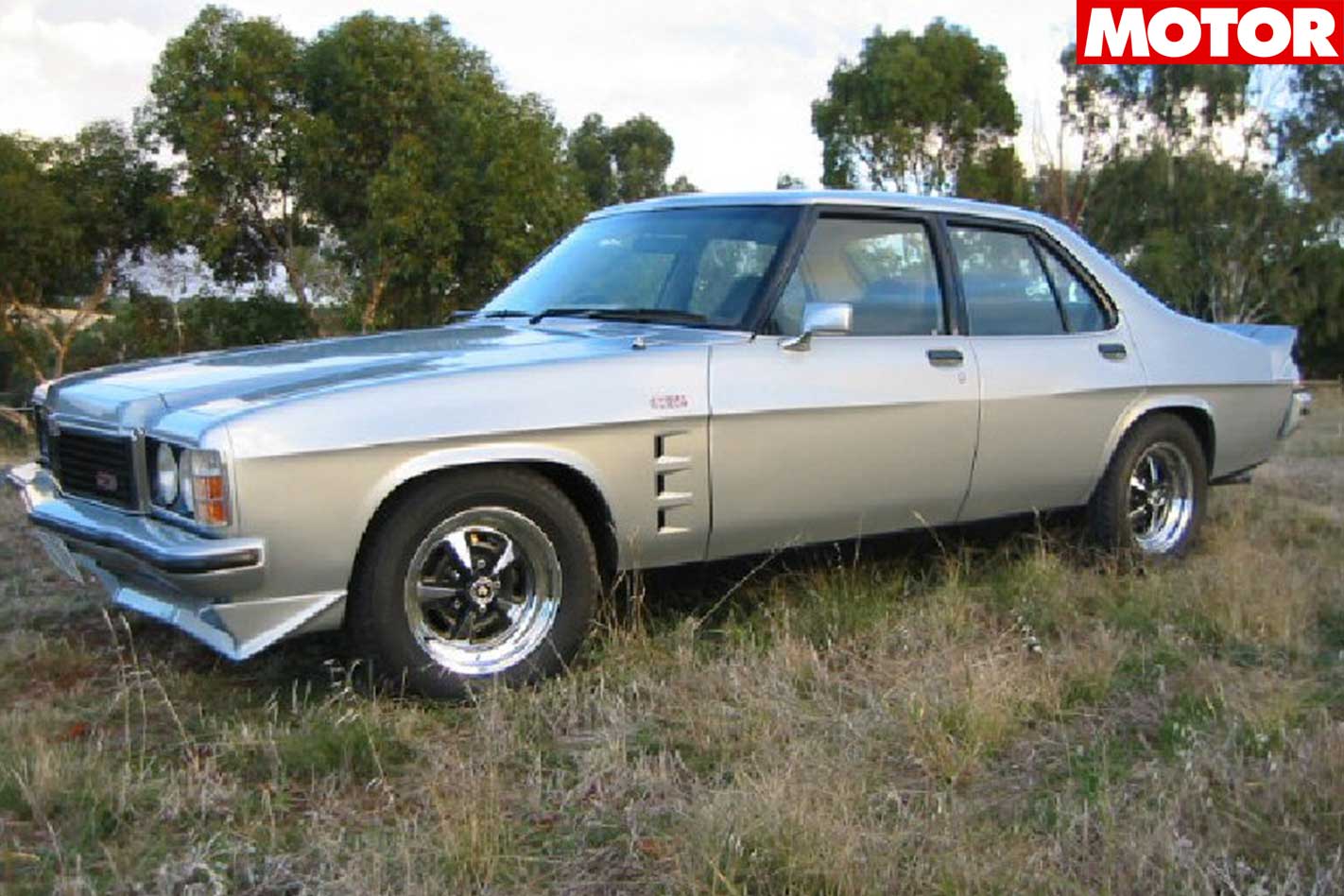
ENGINE: 5044cc V8, OHV, 16v POWER: 161kW @ 4800rpm TORQUE: 400Nm @ 3100rpm WEIGHT: 1475kg 0-110km/h: 11.9sec (man – tested) 0-400m: 16.8sec (man – tested) PRICE: $8619 (1977)
1992 VP GTS
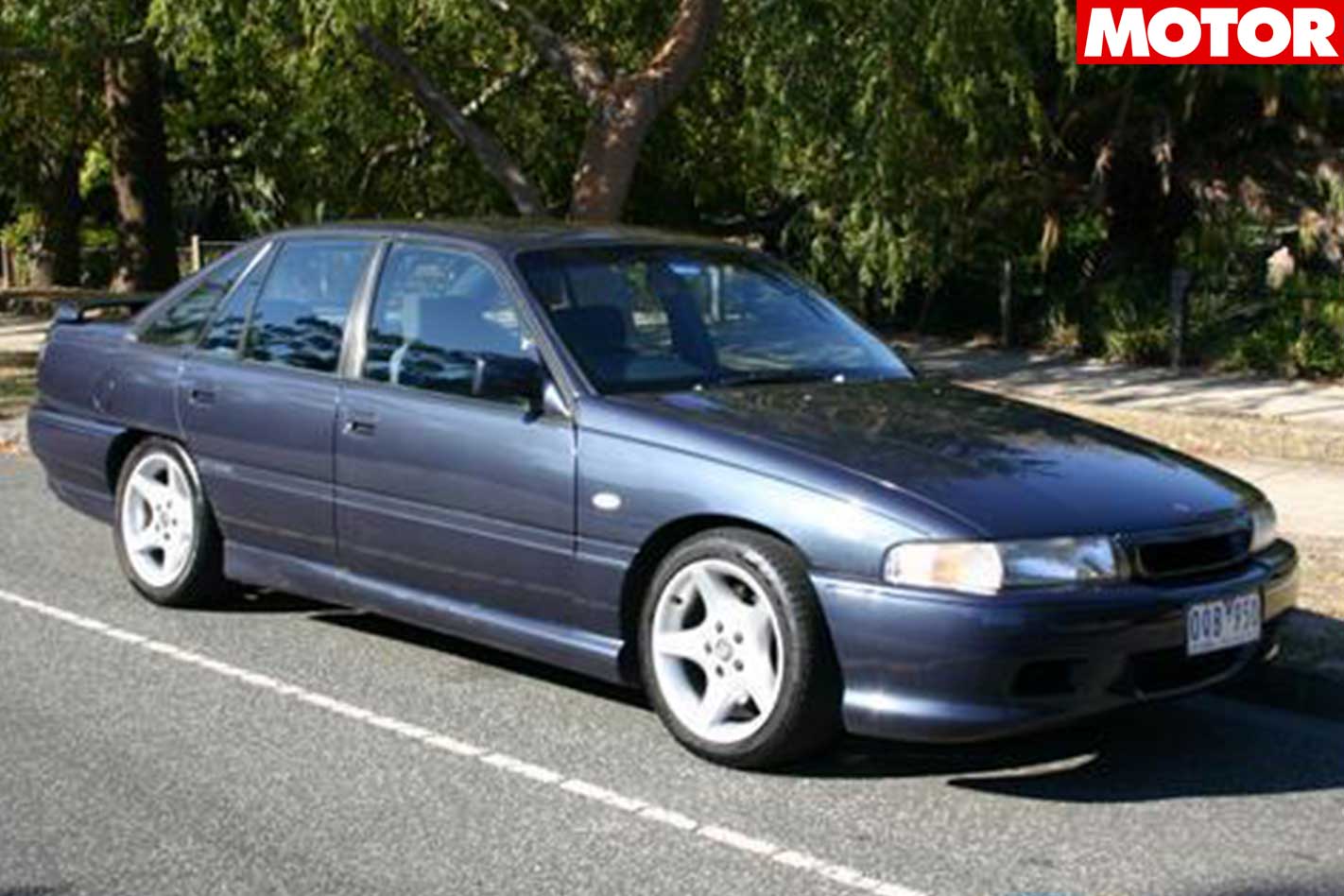
ENGINE: 4987cc V8, OHV, 16v POWER: 200kW @ 5200rpm TORQUE: 410Nm @ 3600rpm WEIGHT: 1633kg 0-100km/h: 7.31sec (auto – tested) 0-400m: 15.75sec (auto – tested) PRICE: $53,750 (1992)
1994 VR GTS
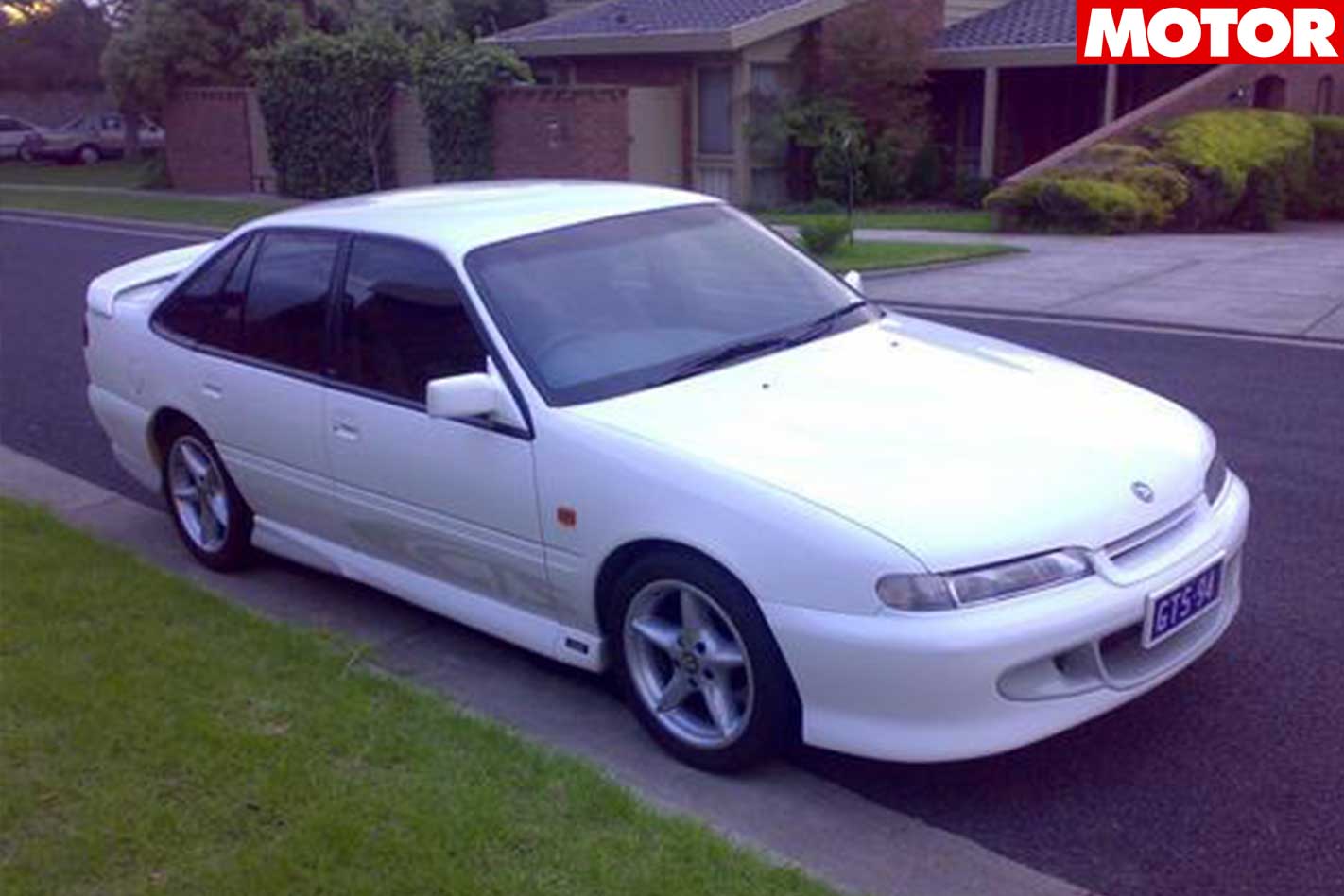
ENGINE: 5710cc V8, OHV, 16v POWER: 215kW @ 4800rpm TORQUE: 475Nm @ 3600rpm WEIGHT: 1600kg 0-100km/h: 6.6sec (man – tested) 0-400m: 14.8sec (man – tested) PRICE: $59,324 (1994)
1995 VS GTS
Ian Callum styled VS GTS offered 5.7-litre stroker and polished three-spoke alloys. Driveline identical to 246km/h VR GTS, but 250km/h speedo and firmer ride and handling package were introduced, with Touring and Sports options.
ENGINE: 5710cc V8, OHV, 16v POWER: 215kW @ 4800rpm TORQUE: 475Nm @ 3600rpm WEIGHT: 1600kg 0-100km/h: 6.19sec (man – tested) 0-400m: 14.8sec (man – tested) PRICE: $62,677 (1995)
1995 VS GTS-R
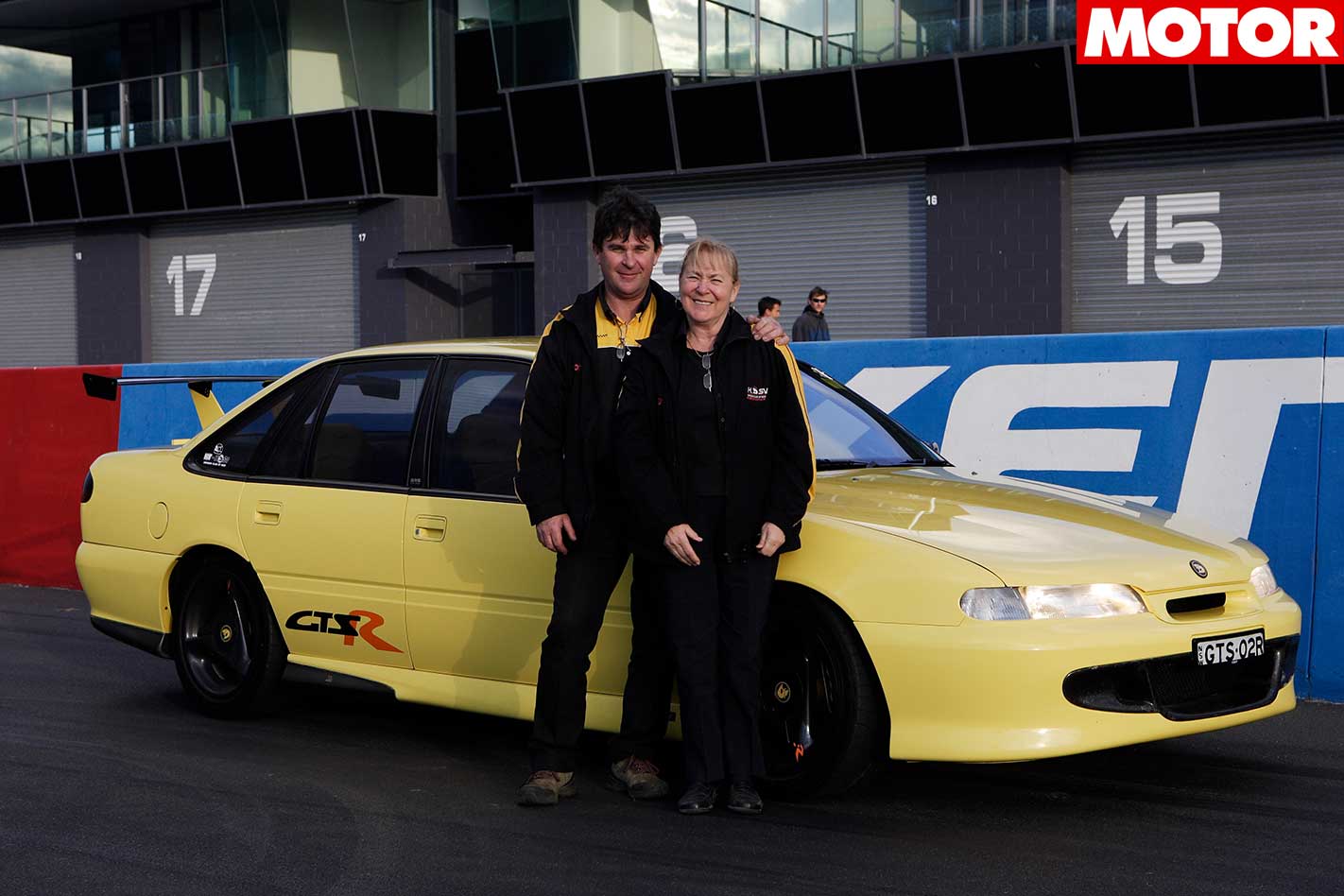
ENGINE: 5710cc V8, OHV, 16v POWER: 215kW @ 4800rpm TORQUE: 475Nm @ 3600rpm WEIGHT: 1600kg 0-100km/h: 6.6sec (man – tested) 0-400m: 14.8sec (man – tested) PRICE: $76,000 (1995)
1997 VT GTS
The VT HSV range delivered a GTS with more power – 220kW thanks to better breathing and smarter EFI. A more aero-friendly bodyshell saw the VT GTS crack 250km/h in pre-launch testing. Last GTS to be powered by the Holden stroker.
ENGINE: 5737cc V8, OHC, 16v POWER: 220kW @ 4800rpm TORQUE: 475Nm @ 3600rpm WEIGHT: 1740kg 0-100km/h: 7.6sec (man – tested) 0-400m: 15.5sec (man –tested) PRICE: $76,000 (1997)
2000 VT II GTS
By VTII, the 220kW ‘Iron Lion’ Aussie V8 is gone. So – again – is HSV’s GTS until the LS1-based Callaway Engineering (USA) C4B ‘tier two’ engine arrives. With a special diff and six cogs, it’s a sweet sounding 300kW sub-6.0sec screamer.
ENGINE: 5665cc V8, OHV, 16v POWER: 300kW @ 6000rpm TORQUE: 510Nm @ 4800rpm WEIGHT: 1721kg 0-100km/h: 5.9sec (man –tested) 0-400m: 14.0sec (man – tested) PRICE: $90,500 (2000)
2001 VX GTS
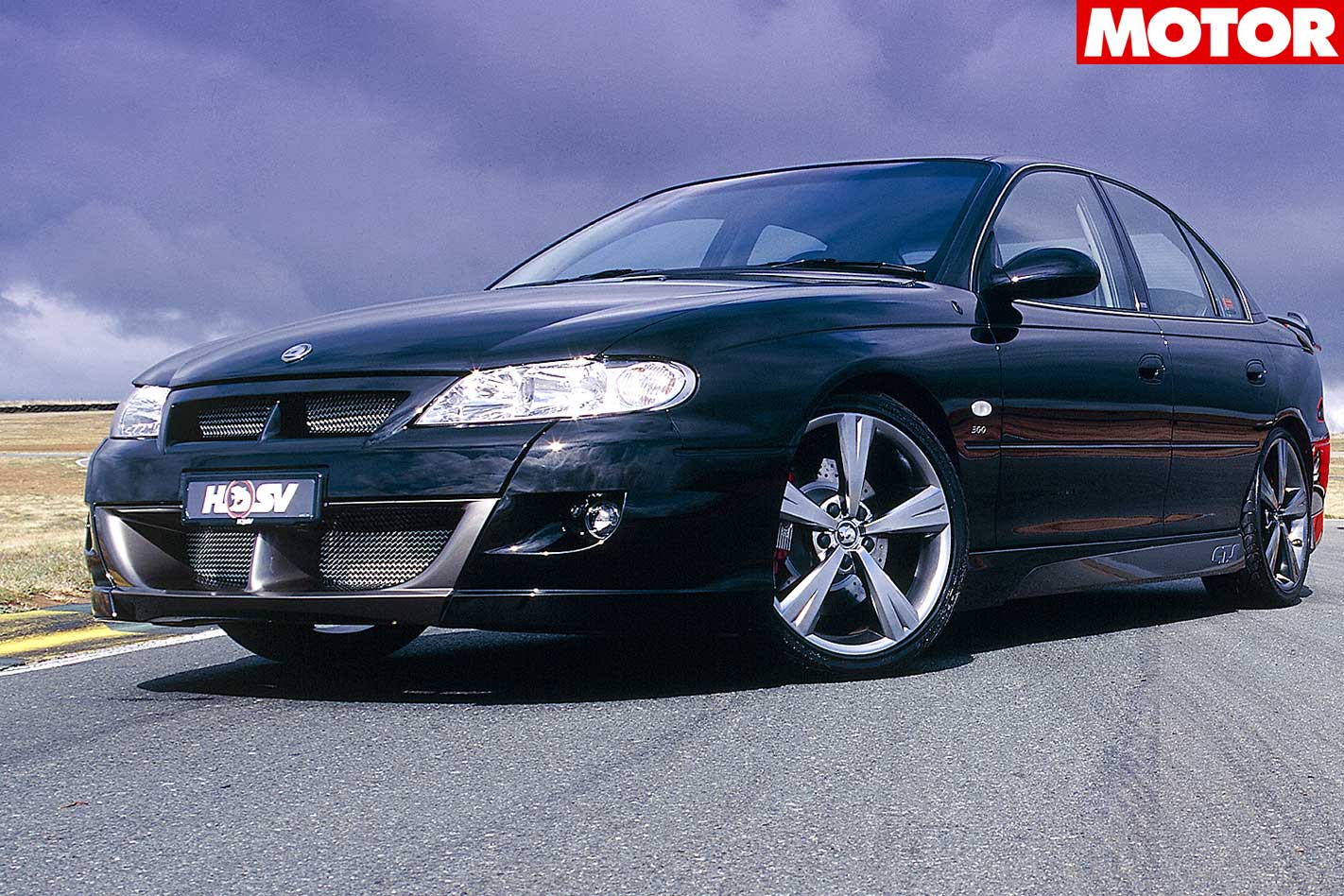
ENGINE: 5665cc V8, OHV, 16v POWER: 300kW @ 6000rpm TORQUE: 510Nm @ 4800rpm WEIGHT: 1700kg 0-100km/h: 5.4sec (man –tested) 0-400m: 13.57sec (man – tested) PRICE: $92,100 (2001)
2002 VY GTS
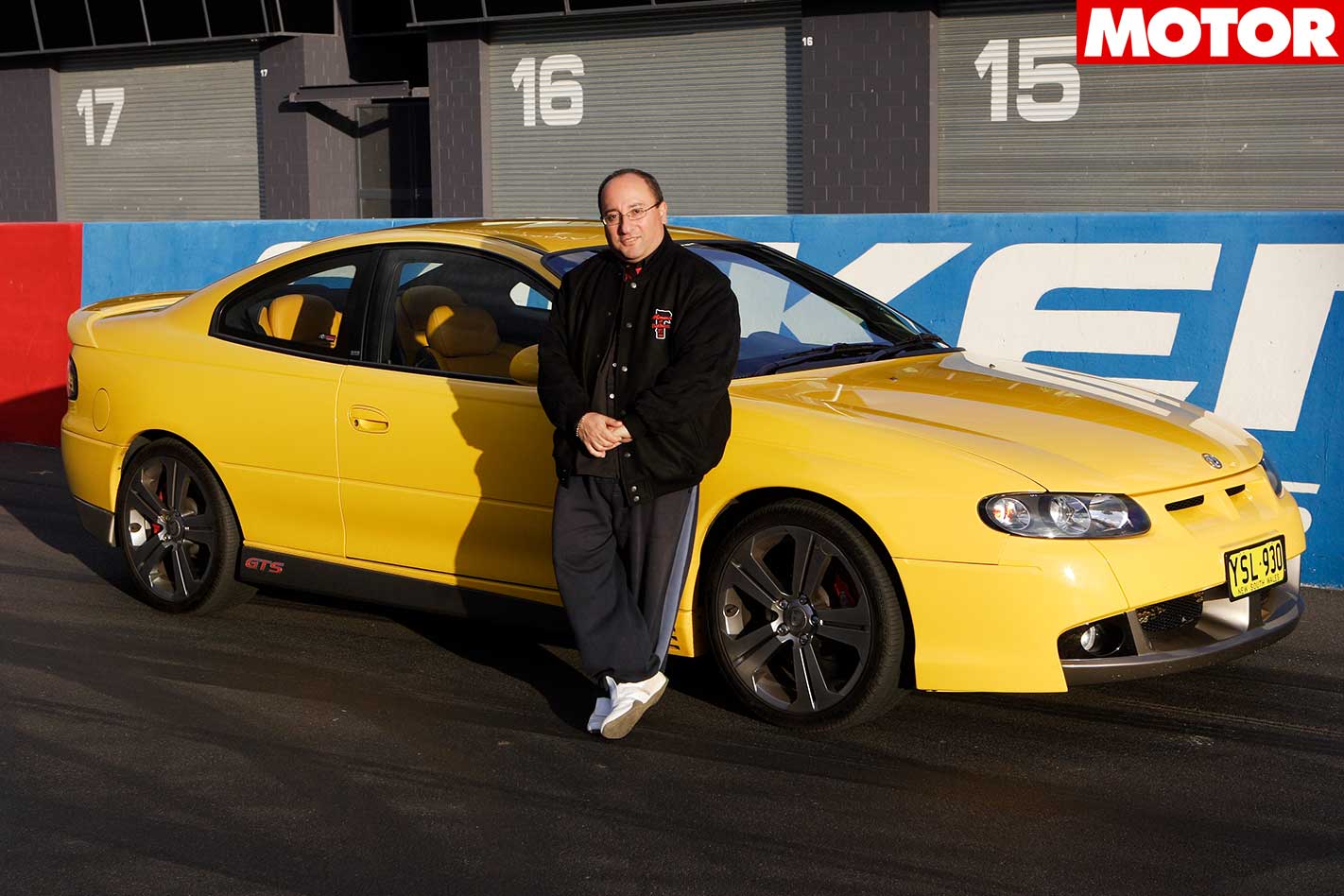
ENGINE: 5665cc V8, OHV, 16v POWER: 300kW @ 6000rpm TORQUE: 510Nm @ 4800rpm WEIGHT: 1680kg 0-100km/h: 5.7sec (man – tested) 0-400m: 13.74 PRICE: $94,750 (2002)
V8s – The GTS’ Heart and Soul
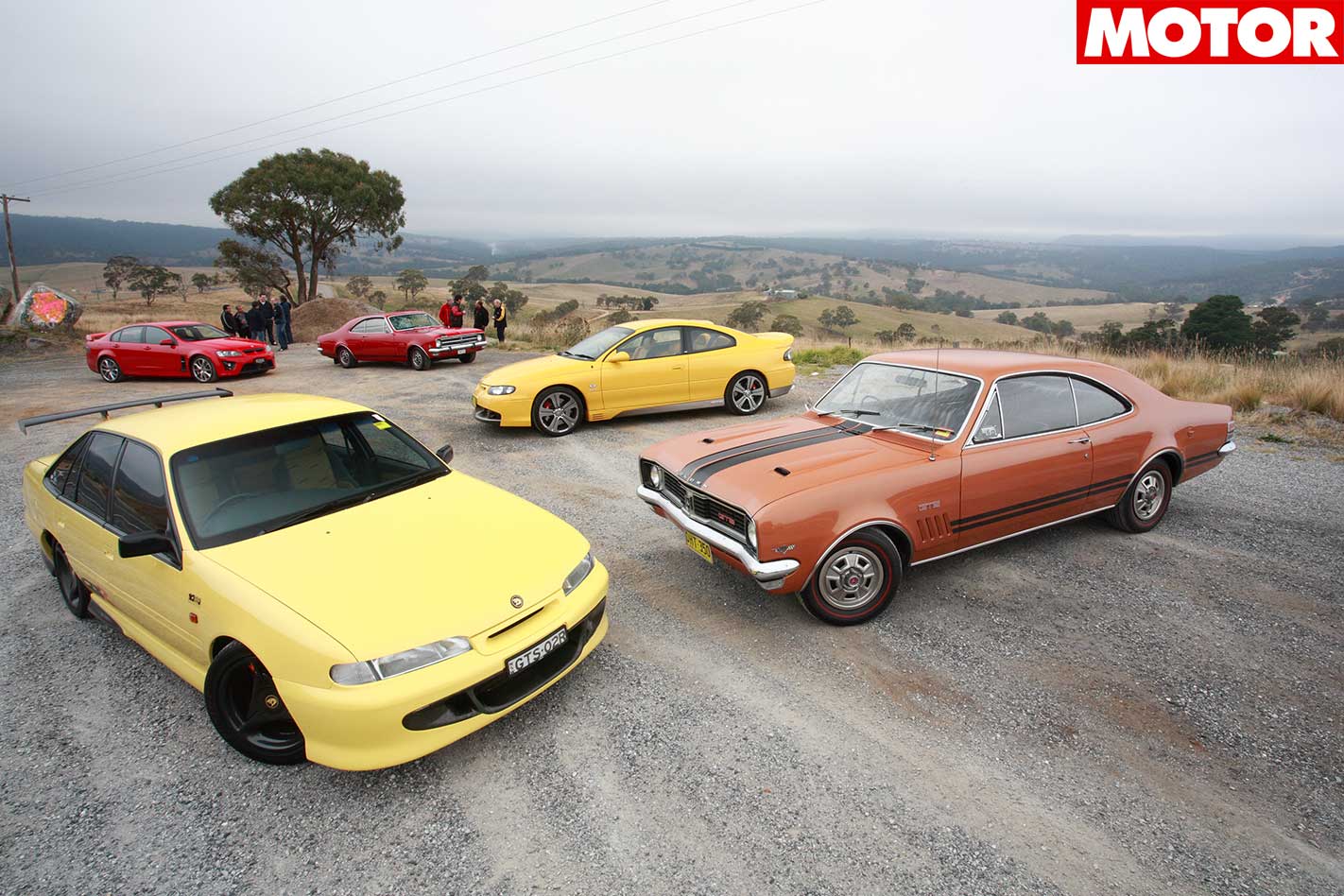
327 (5.4L) V8 Debuted with ’68 HK, the US-import was replaced by (also imported) 350 in ’69 HT.
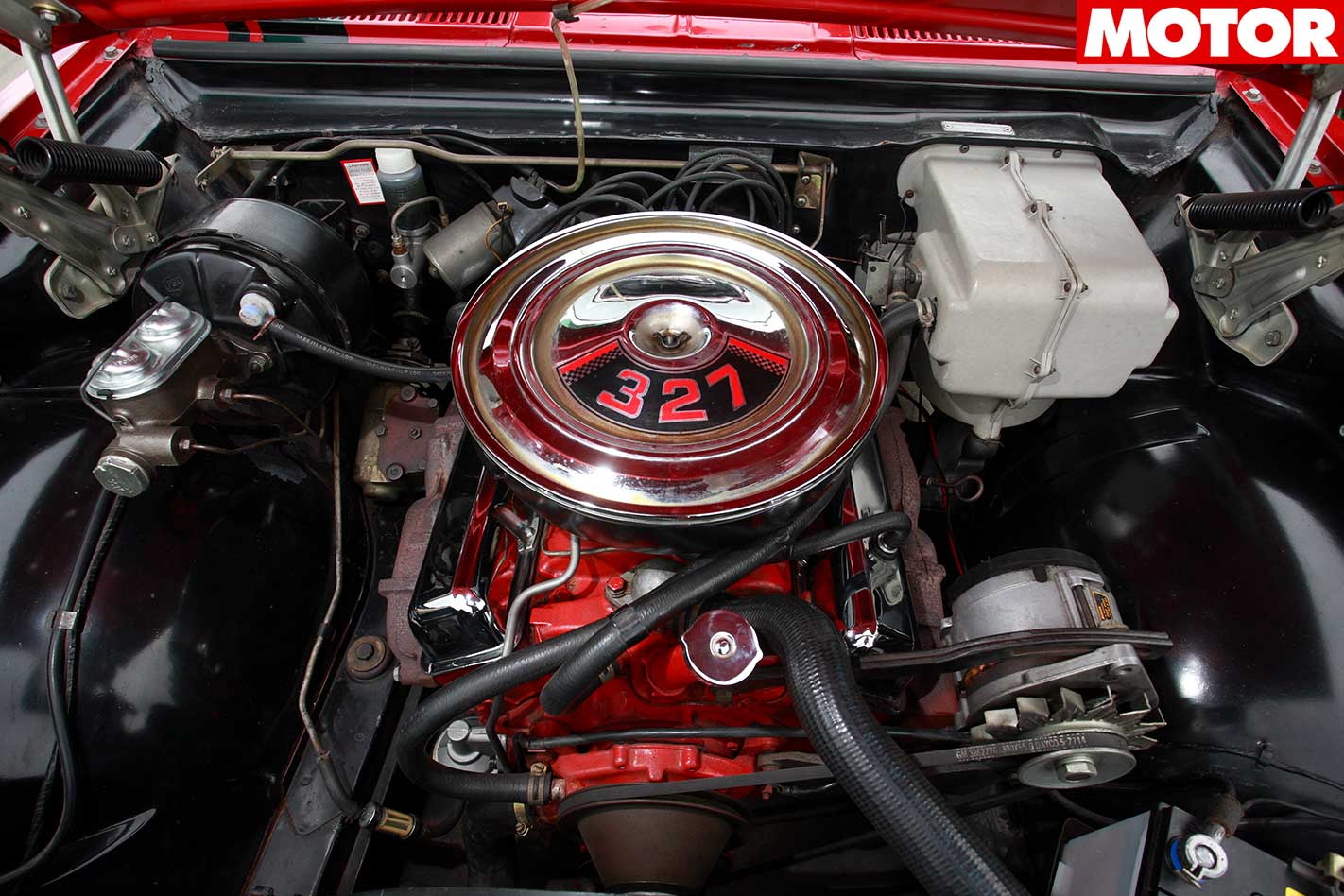
253 (4.2L) V8 First Aussie V8 debuted in 1969. Used until HZ GTS; Carried on until 1984 Comodore.
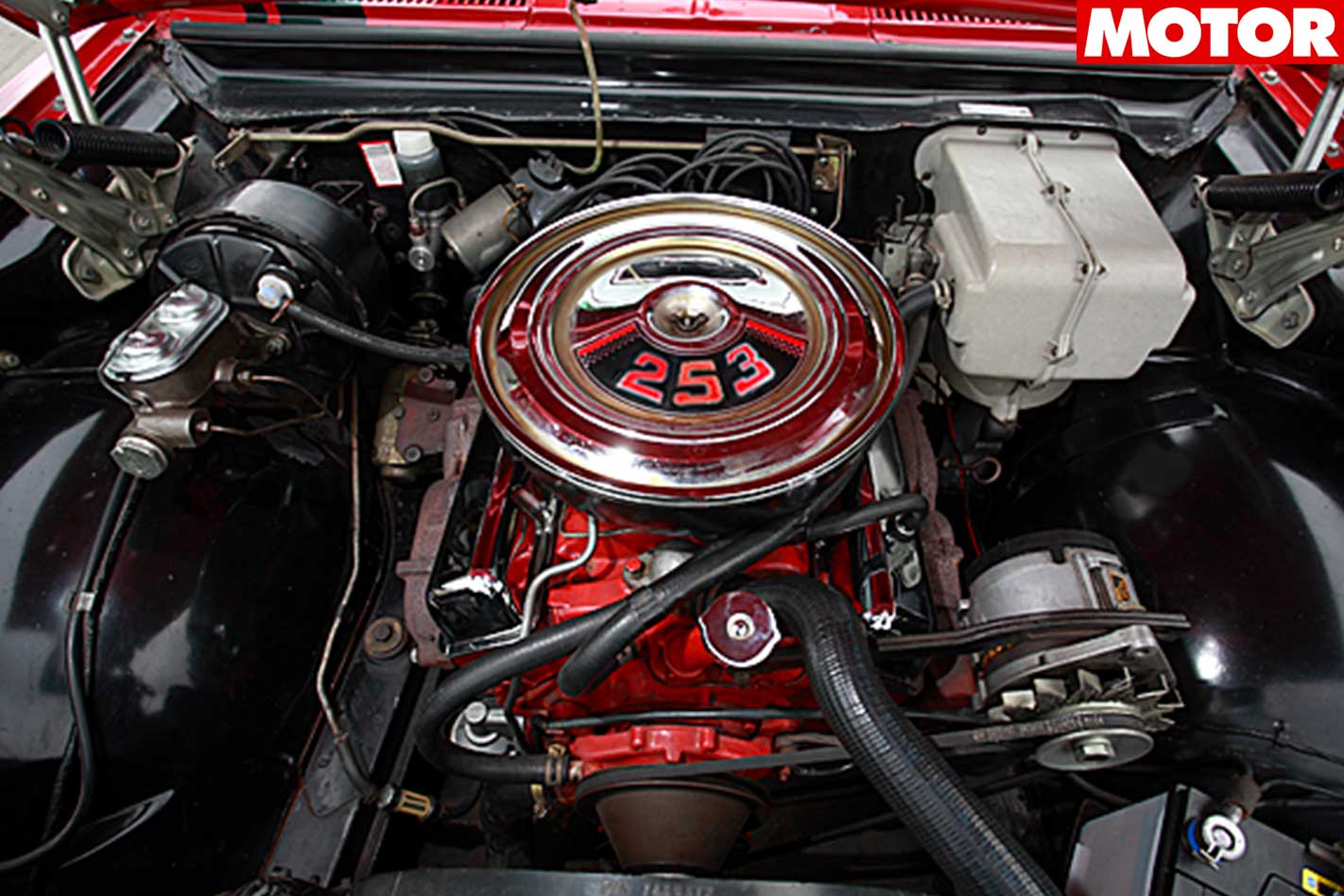
350 (5.7L) Debuted in 1969 HT, making the model the quickest of all GTS’ until the ’92 VP GTS.
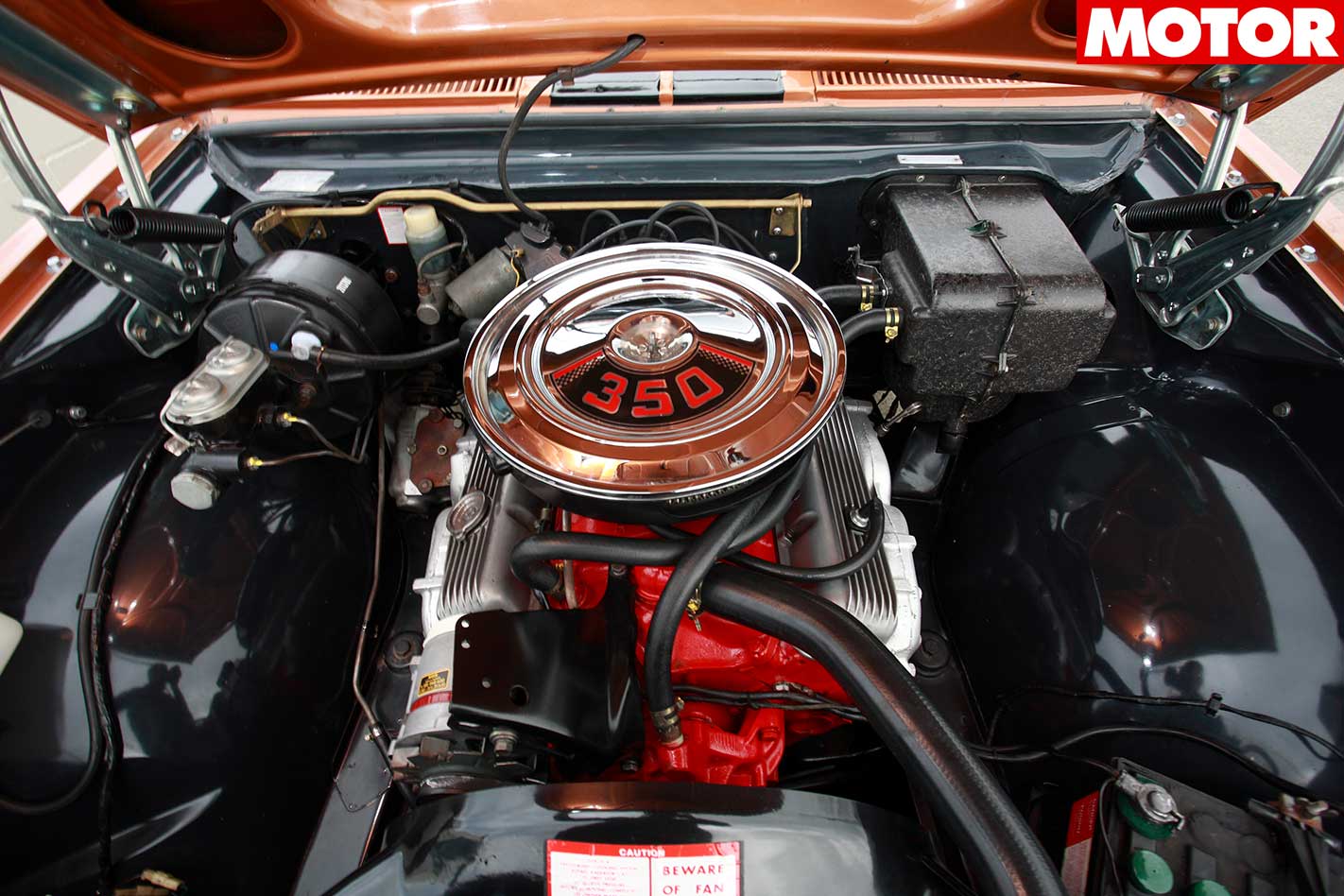
304 (4.9L) First injected GTS mated solely to 4-speed auto in VP; EFI V8 debuted in 1988.
ENGINE: 4987cc V8, OHV, 16v POWER: 200kW @ 5200rpm TORQUE: 410Nm @ 3600rpm
5.7L Stroker Stroked version of Aussie 5.0-litre; used in VR/VS/VT Series I GTS and Senators.

5.7L C4B Callaway-tuned, debuted with VTII in 2000; stronger and tougher than LS1.
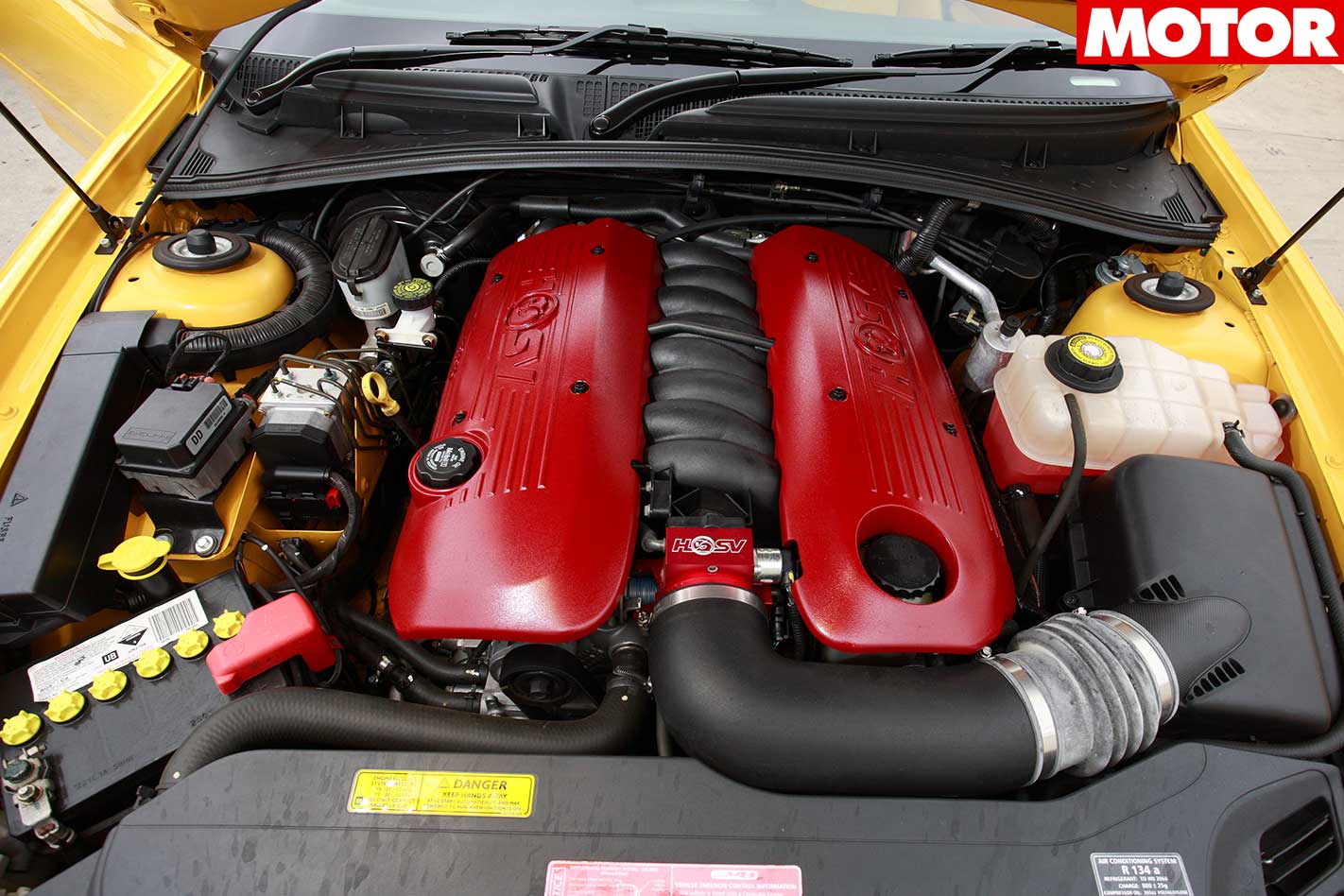
6.0L LS2 Debuted with E-Series; better bottom-end torque; is still in Holden’s current range.
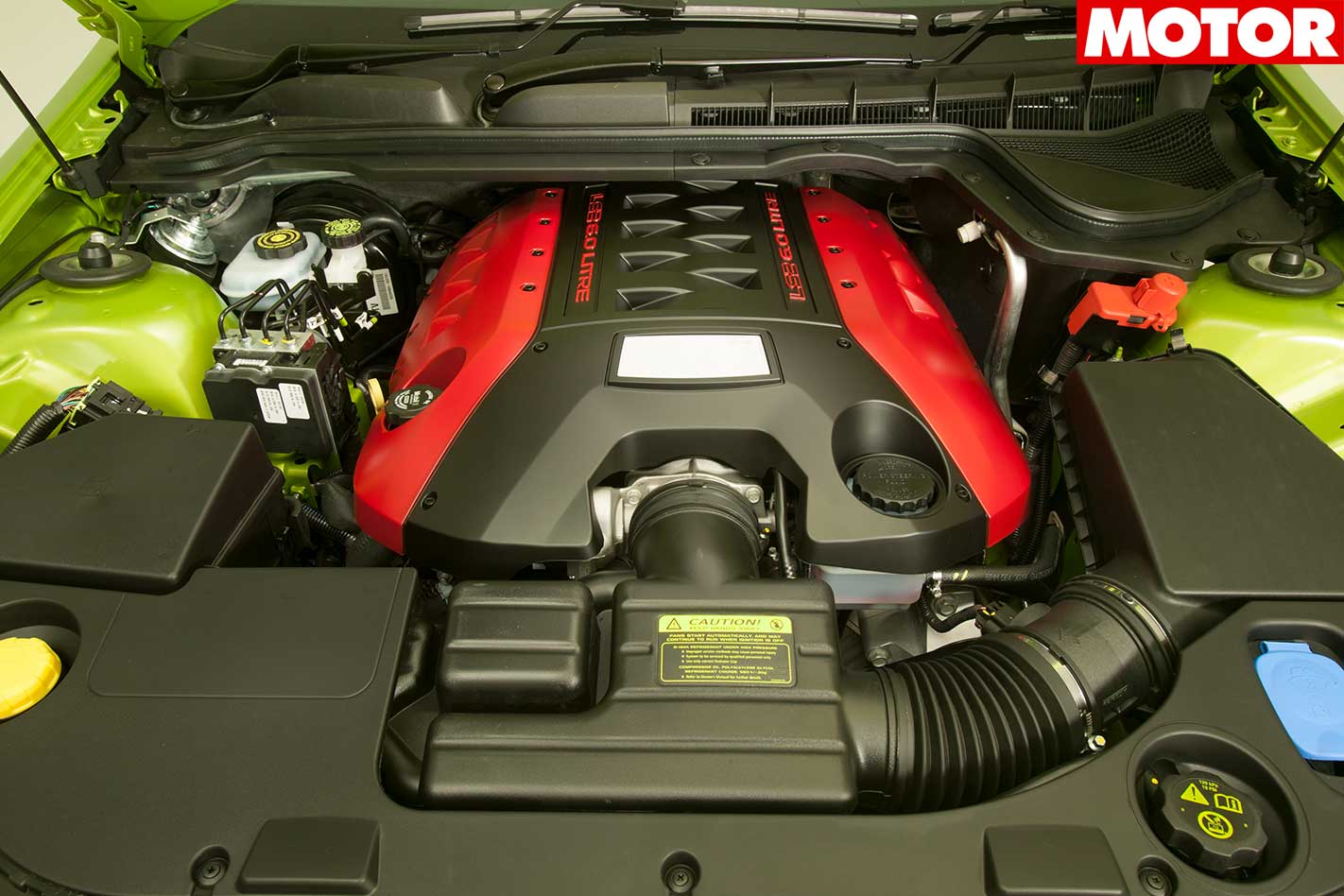
6.2L LS3 Debuted in 2008 Series II HSVs; more mid-range punch and an even better growl.
